Inbox and Environment News: Issue 463
August 23 - 29, 2020: Issue 463
Time Of Wiritjiribin - Tugarah Gunya'marri (Cold And Windy) August
The lyrebirds' calls ring out through the bushland as he builds his dancing mounds to attract his potential mates. It is the time of the flowering of the Marrai'uo (Acacia floribunda) which is a sign that the fish are running in the rivers. At the end of this time the Boo'kerrikin (Acacia decurrens) flower, which indicates the end of the cold, windy weather, and the beginning of the gentle spring rains.
Concerns Night Trimming Of Trees Will Impact On Pregnant Grey-Headed Flying Fox Colony In Cannes Reserve
Residents have expressed concern this week over a letter received from council, dated August 19th, 2020 of their intention to carry out tree trimming at night on the evenings of August 25th, 26th and 27th between 7 and 11 pm due to knowledge that those bats which are pregnant will abort babies due to the stress such activities cause.
The Cannes camp was initially only a small number (200) of males (Pittwater Council 2011), but has gradually grown and for the past ten years has been used as a maternity camp. Pittwater Council’s Cannes Reserve Flying-fox Camp Management Plan 2015-2020 states;
‘’As a continuously occupied camp, the Cannes Reserve is obviously conveniently located to year round foraging resources, provides ideal roost habitat during all seasons and fulfils the particular requirements for birthing and rearing.’’
And:
''As per standard conditions for flying-fox management approvals (OEH 2014), dispersal will not occur while females are visibly pregnant, birthing or when dependent young are present.''
The same Management Plan requires a a wildlife carer and veterinarian on stand-by to accept injured or orphaned flying-foxes if required. Other measures during all management activities to minimise the potential for animal welfare and population level impacts include removal of roost vegetation (tree removal/trimming) being ideally done while flying-foxes are not present (i.e. after successful dispersal or at night when flying-foxes are away foraging).
In 2015 a similar program was undertaken, with noise and light to disperse the colony. Soon afterwards bats were back in the reserve.
Flying-foxes play a critical ecological role in the long term persistence of Australian tropical and sub-tropical forests through long-distance seed and pollen dispersal (Roberts et al 2006; McConkey et al 2011; Wescott et al 2008). Flying-foxes are highly mobile, capable of travelling over 100 kilometres in a single night to forage on the nectar pollen and fruit of more than 100 native trees. In this regard, flying-foxes are considered a ‘keystone species’ as they are one of the few animal groups that can disperse seed and cross pollinate plants over more than a few kilometres. This is of particular importance in the context of a continually fragmenting landscape and for these reasons their extinction would be catastrophic and would reverberate throughout Australia's forest ecosystems.
Last Spring and Summer catastrophic conditions impacted on Grey-Headed Flying Foxes with thousands lost from the onset of the season from Queensland and right along the east down and through Victoria. After widespread Winter starvation, compounded by record heat, whole colonies were wiped out.
Similar conditions in the Summer preceding the last resulted in more than 23,000 spectacled flying foxes deaths in Cairns, almost one third of the species in Australia.
After 6 months gestation, GHFF females give birth to one pup in Spring (mid September to November), meaning those living in ''the Cannes Creche'' at present are close to full term. Most give birth in the tree tops of the camp. First the head appears and the mother licks her pup. The female clings to branches with her thumbs and toes and forms a u-shaped body sling during the birth.
Because newborns are entirely dependent on their mothers in the first few months of life, they cling to her when she goes off foraging at night. To get a solid grip, they hang onto her nipple located under her wing, and grip around her waist with their hind legs.
Some researchers state that because of their low reproduction rate, the maternal instinct of flying foxes is incredibly strong. After losing their babies to predators, mothers have been observed flying and calling in the area where they last saw their young for weeks.
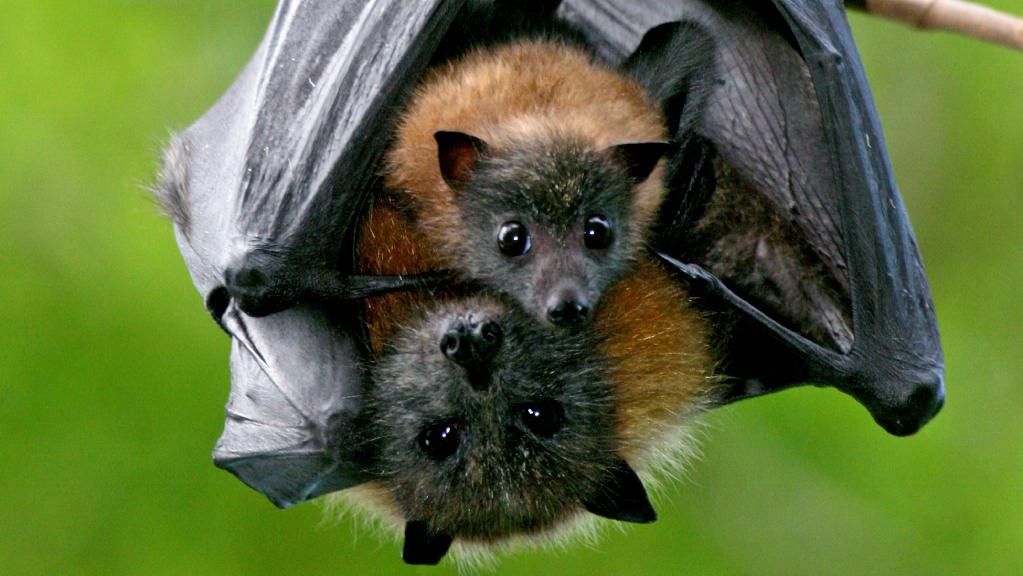
Their roosts are at their largest during the flying-fox breeding season, from January on, and conception usually takes place from early Autumn on.
The grey-headed flying fox is now a prominent federal conservation problem in Australia. Early in the last century, the species was considered abundant, with numbers estimated in the many millions. In recent years, though, evidence has been accumulating that the species is in serious decline. An estimate for the species in 2019 put the number at 586,000 and the national population may have declined by over 30% between 1989 and 1999 alone.
Grey-headed flying foxes are exposed to several threats, including loss of foraging and roosting habitat, competition with the black flying fox, and mass die-offs caused by extreme temperature events, such as those seen in recent years. When present in urban environments, grey-headed flying foxes are sometimes perceived as a nuisance, but they are beautiful creatures, a kind of flying puppy dog with doe eyes.
Flying fox wings have evolved from their hands, with a thin membrane of skin stretched between each finger. The order Chiroptera of which bats are a part, literally means "hand wing".
They first appeared in the fossil record about 50 million years ago, and analysing the skeleton clearly shows the evolution of the hands according Western Sydney University senior lecturer Dr Justin Welbergen.
"When you look at their skeletons, you can clearly see they have four fingers and a thumb with a membrane grown between it," he said.
As a keystone species - Australia needs her flying foxes.
Council’s letter states the night works have been approved by the NSW Dept. of Planning, Industry and Environment. The works are being undertaken to minimise the conflict between residents and the colony and to ensure the 7 metre buffer zone is kept free of roosting sites in accordance with the Pittwater Council Cannes Reserve Flying-fox Camp Management Plan 2015 – 2020.
The letter does not state whether a Wildlife Officer will be present during the works to ensure the safety of the species.
Residents who would like further information regarding the night tree trimming works are advised to contact Andrew Jennings, Bushland Management Officer, on 8495 6689 or email Andrew.jennings@northernbeaches.nsw.gov.au
Mr. Jennings has had knowledge of this colony over several years when working at Pittwater Council and looking after resident flora and fauna.
Further information about this GHFF Campo may be read in ELA 2012. Cannes Reserve – Grey-headed Flying-fox camp management: Species Impact Statement. Prepared for Pittwater Council, by Eco Logical Australia Pty Ltd, Sutherland‘ - available at: https://www.environment.nsw.gov.au/resources/threatenedspecies/s91ands95/SIS_A04498-2015.pdf
Activities to assist this species listed by the NSW Office of Environment & Heritage include
- Protect roost sites, particularly avoid disturbance September through November.
- Identify and protect key foraging areas.
- Investigate and promote alternative non-lethal crop protection mechanisms.
- Identify powerline blackspots and implement measures to reduce deaths; implement measures to reduce deaths from entanglement in netting and on barbed-wire.
- Increase public awareness/understanding about flying-foxes, and their involvement in flying-fox conservation.
- Monitor the national population's status and distribution.
- Improve knowledge on demographics and population structure to better understand ecological requirements of the species.
A targeted strategy for managing this species has been developed under the Saving Our Species program; click here for details.
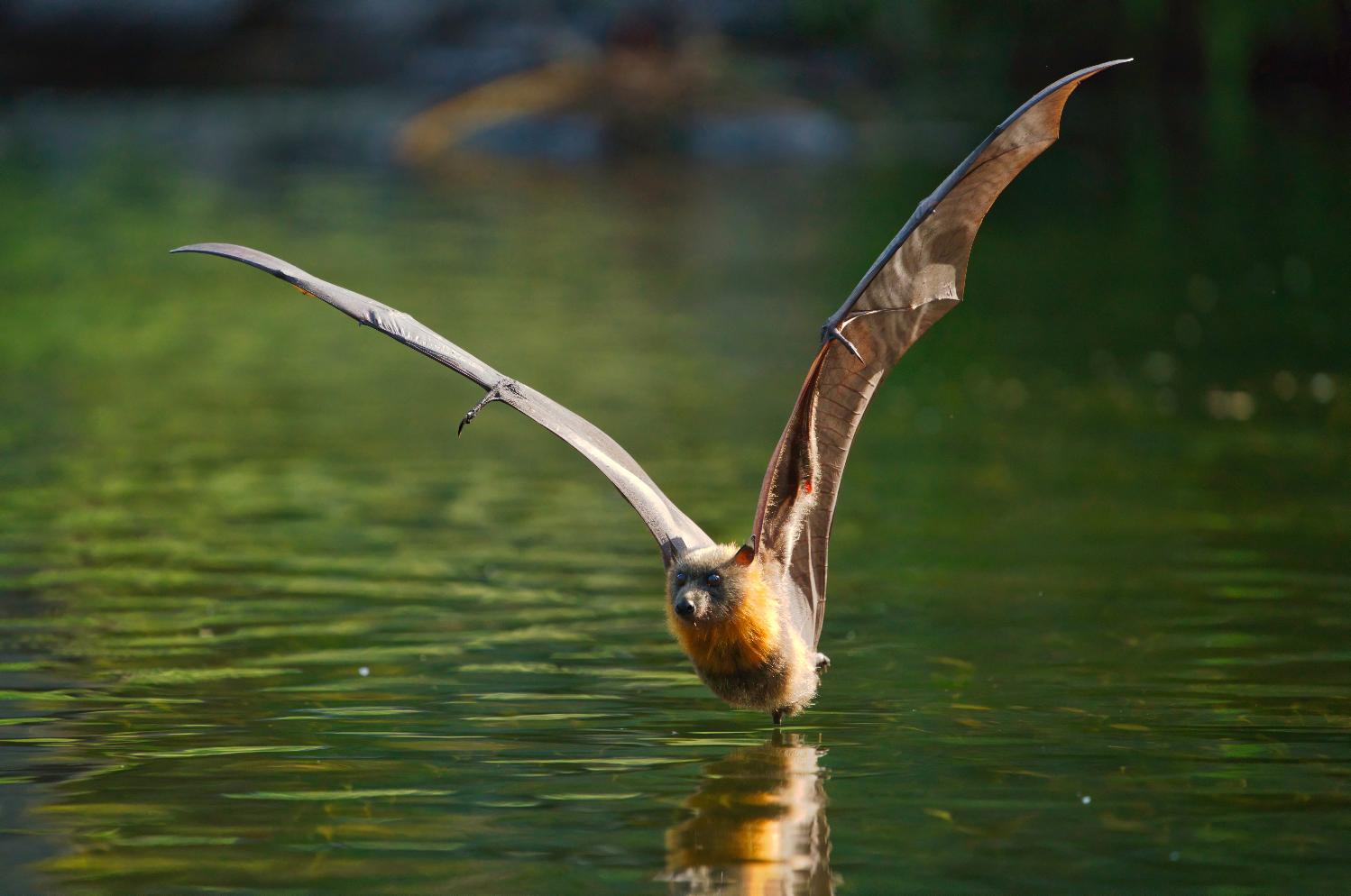
Katandra Season 2020
Katandra Bushland Sanctuary on Lane Cove Rd Ingleside is now open every Sunday until October 25, 10am-4pm. Visitors to this lovely bushland have recently seen Powerful and Boobook Owls, Swamp Wallabies and Lyrebirds. Visitors, please make a small donation towards management of this Crown Land reserve. More details: http://www.katandra.org/home.htm
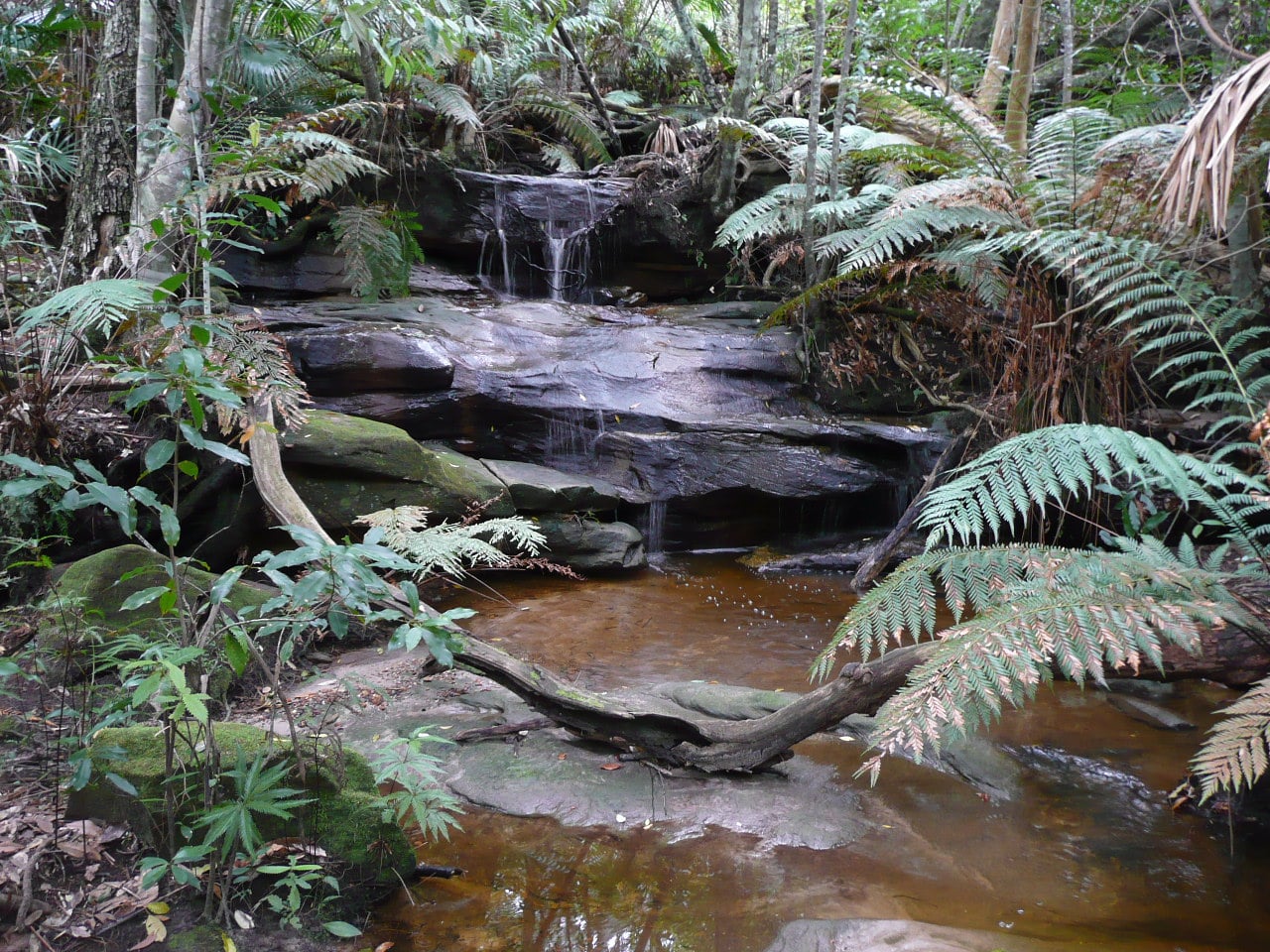
Several creeks flow down the escarpment - photo by Marita Macrae
Please Help Sydney Wildlife Rescue: Donate Your Cans And Bottles And Nominate SW As Recipient
You can Help Sydney Wildlife help Wildlife. Sydney Wildlife Rescue is now listed as a charity partner on the return and earn machines in these locations:
- Pittwater RSL Mona Vale
- Northern Beaches Indoor Sports Centre NBISC Warriewood
- Woolworths Balgowlah
- Belrose Super centre
- Coles Manly Vale
- Westfield Warringah Mall
- Strathfield Council Carpark
- Paddy's Markets Flemington Homebush West
- Woolworths Homebush West
- Bondi Campbell pde behind Beach Pavilion
- Westfield Bondi Junction car park level 2 eastern end Woolworths side under ramp
- UNSW Kensington
- Enviro Pak McEvoy street Alexandria.
Every bottle, can, or eligible container that is returned could be 10c donated to Sydney Wildlife.
Every item returned will make a difference by removing these items from landfill and raising funds for our 100% volunteer wildlife carers. All funds raised go to support wildlife.
It is easy to DONATE, just feed the items into the machine select DONATE and choose Sydney Wildlife Rescue. The SW initiative runs until August 23rd.
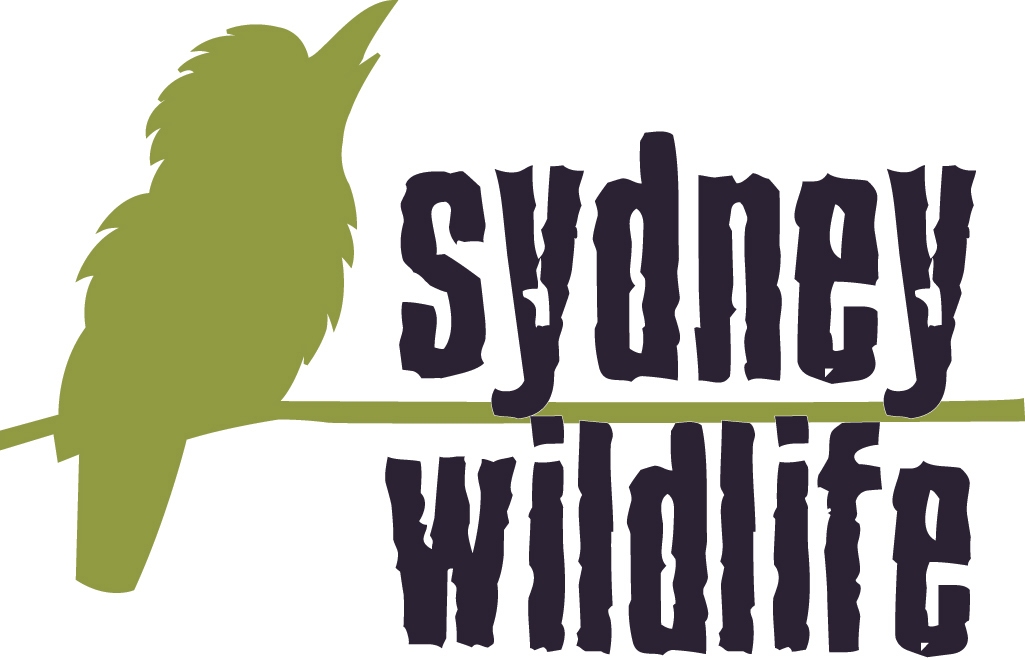
Bushcare In Pittwater
Where we work Which day What time
Avalon
Angophora Reserve 3rd Sunday 8:30 - 11:30am
Avalon Dunes 1st Sunday 8:30 - 11:30am
Avalon Golf Course 2nd Wednesday 3 - 5:30pm
Careel Creek 4th Saturday 8:30 - 11:30am
Toongari Reserve 3rd Saturday 9 - 12noon (8 - 11am in summer)
Bangalley Headland 2nd Sunday 9 to 12noon
Bayview
Winnererremy Bay 4th Sunday 9 to 12noon
Bilgola
North Bilgola Beach 3rd Monday 9 - 12noon
Algona Reserve 1st Saturday 9 - 12noon
Plateau Park 1st Friday 8:30 - 11:30am
Church Point
Browns Bay Reserve 1st Tuesday 9 - 12noon
McCarrs Creek Reserve Contact Bushcare Officer To be confirmed
Clareville
Old Wharf Reserve 3rd Saturday 8 - 11am
Elanora
Kundibah Reserve 4th Sunday 8:30 - 11:30am
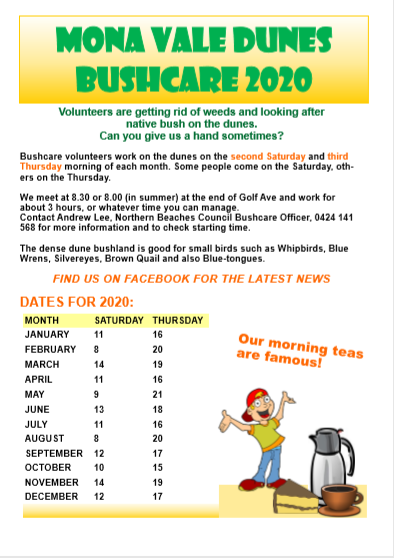 Mona Vale
Mona Vale Mona Vale Beach Basin 1st Saturday 8 - 11am
Mona Vale Dunes 2nd Saturday +3rd Thursday 8:30 - 11:30am
Newport
Bungan Beach 4th Sunday 9 - 12noon
Crescent Reserve 3rd Sunday 9 - 12noon
North Newport Beach 4th Saturday 8:30 - 11:30am
Porter Reserve 2nd Saturday 8 - 11am
North Narrabeen
Irrawong Reserve 2nd Saturday 2 - 5pm
Palm Beach
North Palm Beach Dunes 3rd Saturday 9 - 12noon
Scotland Island
Catherine Park 2nd Sunday 10 - 12:30pm
Elizabeth Park 1st Saturday 9 - 12noon
Pathilda Reserve 3rd Saturday 9 - 12noon
Warriewood
Warriewood Wetlands 1st Sunday 8:30 - 11:30am
Whale Beach
Norma Park 1st Friday 9 - 12noon
Western Foreshores
Coopers Point, Elvina Bay 2nd Sunday 10 - 1pm
Rocky Point, Elvina Bay 1st Monday 9 - 12noon
Gardens And Environment Groups And Organisations In Pittwater
Tick Population Booming In Our Area
Residents from Terrey Hills and Belrose to Narrabeen and Palm Beach report a high number of ticks are still present in the landscape. Local Veterinarians are stating there has not been the usual break from ticks so far and each day they’re still getting cases, especially in treating family dogs.
To help protect yourself and your family, you should:
- Use a chemical repellent with DEET, permethrin or picaridin.
- Wear light-colored protective clothing.
- Tuck pant legs into socks.
- Avoid tick-infested areas.
- Check yourself, your children, and your pets daily for ticks and carefully remove any ticks using a freezing agent.
- If you have a reaction, contact your GP for advice.
Glenrock State Conservation Area No Place For A Dog
August 18, 2020
NSW National Parks and Wildlife (NPWS) is urging dog owners in Newcastle and Lake Macquarie to leave their pets at home when visiting Glenrock State Conservation Area and other local national parks.
NPWS Lower Hunter Area Manager Mitch Carter said while it’s understandable that dog owners want to spend time out in nature with their furry friends, there are some good reasons why you can’t bring dogs into NSW national parks.
“Our national parks and state conservation areas are safe refuges for native Australian animals and plants,” said Mr Carter.
“Even the best-behaved dogs can unintentionally crush sensitive plants, bird’s nests and small animals, and dog waste can be a nasty pollutant in waterways.
“Native animals like wallabies, possums, owls and lizards can also pick up on your dog’s scent in the area and think it’s a predator. This can force them away from places where they normally access food and shelter, and in some sad cases, even abandon their young.
“National parks are also places that many visitors seek out in order to avoid interactions with domestic dogs they feel uncomfortable or unsafe around.
“Since the beginning of the COVID-19 pandemic, we’ve experienced a significant increase in park visitors. We have also observed and received feedback from the public about the number of dogs in Glenrock State Conservation Area, particularly on Dudley Beach and Burwood Beach.
“We understand Glenrock is a beautiful and convenient place to get out of the house and have a relaxing walk, but it’s not the right place for your dog.
“At this stage, we’ve issued a number of warnings, however we will begin to issue fines to people with dogs in Glenrock State Conservation Area and other national parks in the area.
“The minimum penalty for having a dog in these areas is $300,” said Mr Carter.
Visitors to the Glenrock State Conservation Area can report illegal activities to the Lower Hunter NPWS Area on (02) 4946 4100 or by emailing npws.lowerhunter@environment.nsw.gov.au
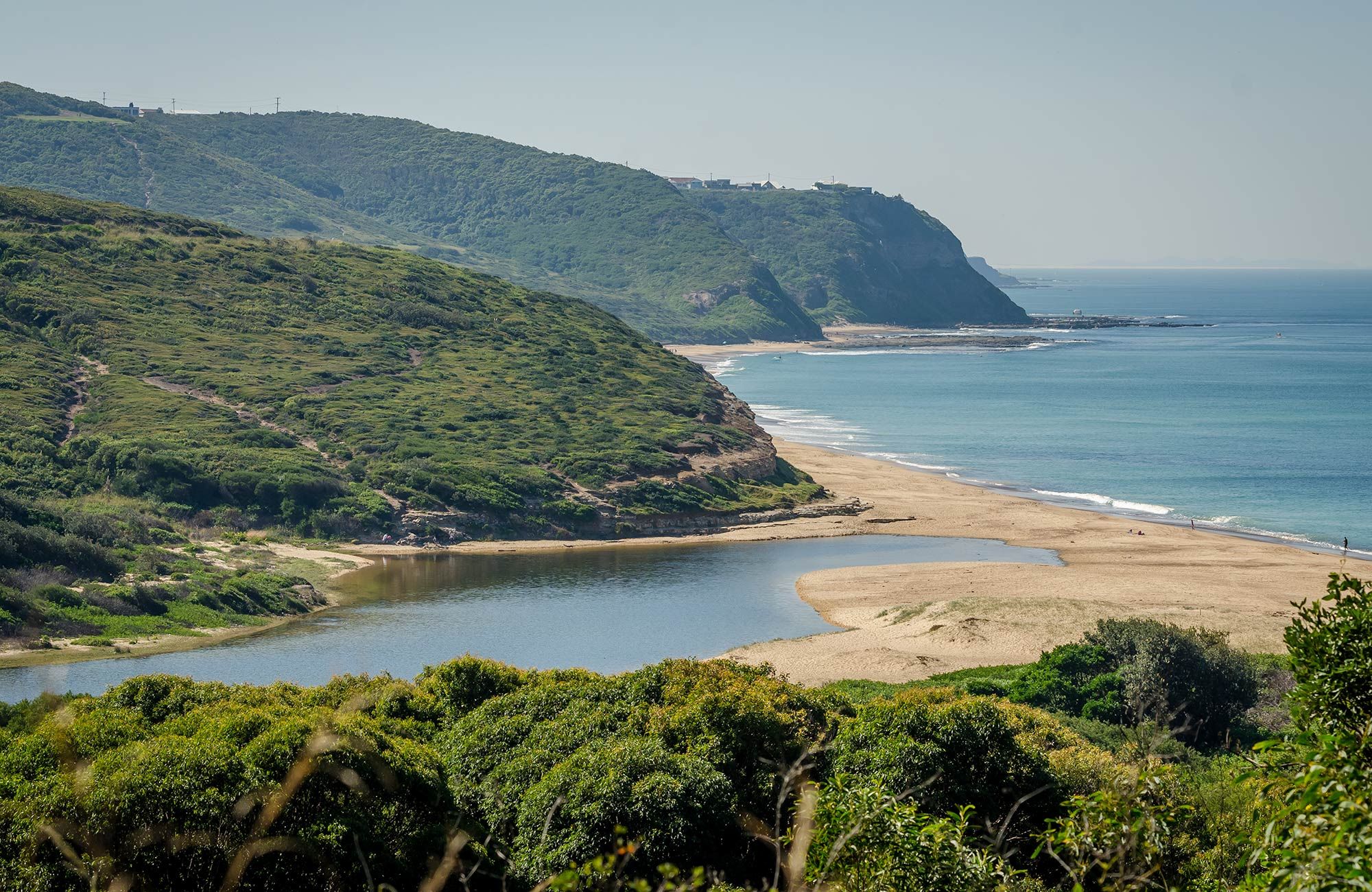
Photo: Leggy Point loop walking track, Glenrock State Conservation Area
Improved Satellite Technology Is Better For Farmers And Native Vegetation
August 19, 2020
Better use of satellite information captured more frequently is helping farmers work within the rules while managing their native vegetation.
The Department of Planning, Industry and the Environment (DPIE) is rolling out an Early Change Monitoring system to ensure any potential clearing is picked up early and able to be cross checked with landholders and other departments.
DPIE Director Community and Compliance Sonya Errington said the system enables early engagement with landholders and minimises the extent of any unlawful clearing.
“Farmers now have greater flexibility to manage native vegetation on their land, but this framework includes some safeguards to avoid harm to sensitive environmental values,” she said.
“We want to ensure a level playing field for all landholders, while protecting our environment.
“Satellites capture images of NSW frequently and we can now analyse these images more regularly, so we can observe vegetation change almost as it occurs.
“When change is detected we cross-check with other departments to see if the clearing is covered by exemptions or approvals. If there is any doubt we can then contact the landholder.
“Sometimes our job is simple because the landholder is already working within the framework. However, if they are unaware of the laws our staff will guide them towards information and any approvals they may need.
If the clearing has gone beyond the rules the department may follow through with a fair and measured compliance response where necessary.
“Speaking to the landholder early on allows us to check they have all the information they require to work safely and sustainably, reducing delays and cost, while enhancing certainty for industry.
“Detecting unapproved clearing early helps us minimise impacts on sensitive environmental assets such as koala habitat.
“Early detection is a win-win,” Ms Errington said
Call To Keep Your Eyes Peeled For Banded Pelicans
August 18, 2020
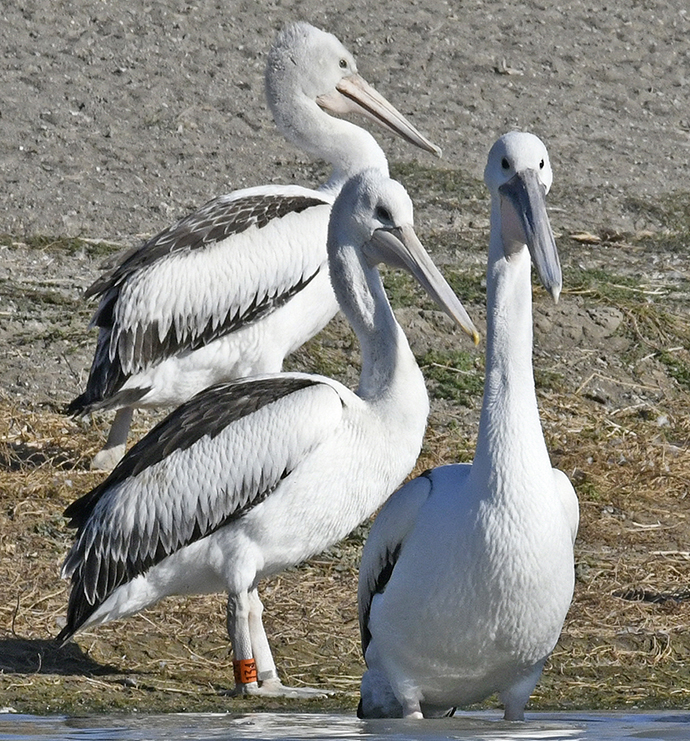 NSW Department of Planning, Industry and Environment scientists are calling on sharp-eyed members of the public to help spot pelicans with bright orange leg bands during National Science Week, as part of the ‘Peli Bands’ study to understand more about the movements and breeding behaviour of this iconic Australian waterbird.
NSW Department of Planning, Industry and Environment scientists are calling on sharp-eyed members of the public to help spot pelicans with bright orange leg bands during National Science Week, as part of the ‘Peli Bands’ study to understand more about the movements and breeding behaviour of this iconic Australian waterbird.
Department Senior Scientist Dr. Jennifer Spencer said the purpose of the study at Lake Brewster, in collaboration with UNSW, was to understand where baby pelicans, known as ‘pinkies’, go once they are old enough to fly away from the lake and whether they return to breed in this wetland in future years.
“With a wingspan of around 2.5 metres, the Australian pelican is highly mobile. Where the birds go, and importantly, where they choose to breed, can help determine how water for the environment is used to support waterbirds in the Murray-Darling Basin,” said Dr Spencer.
“With that knowledge, we can ensure there is the right amount of water in the right wetland for the right period of time to support breeding events, ensure sufficient foraging habitat and provide protection from land-based predators.
“In total, 142 pelicans born at Lake Brewster have been fitted with an orange leg band since 2017.
“We’re asking members of the public to give us a hand and keep an eye out for pelicans bearing these distinctive bands.
“This is an example of citizen science in action! The more people on the lookout for these majestic birds, the more data we can gather on their movements and the threats they face, and the better we’ll be able to manage our wetlands to help protect pelican populations in the long term.
“We have had four reports of banded birds to date, including a bird sighted 650kms away in St George, Queensland, and another bird that had travelled around 570kms and had been spotted by members of the public in Mehi River near Moree.
“Sadly, this pelican had suffered a terrible injury to its wing after becoming entangled in fishing line and couldn’t be saved. This is an important reminder of some of the threats that pelicans face.
“Members of the public can help to prevent injuries to pelicans and other wildlife by taking simple measures such as disposing of equipment like fishing hooks and line properly,” said Dr Spencer.
The Department has been working with river system operator, Water NSW, to manage Lake Brewster storage releases for their downstream customers while also utilising environmental water to maintain water levels following flood events to ensure the success of pelican breeding events.
It’s easy to get involved in the ‘Peli Bands’ citizen science project. If you see a pelican with an orange leg band, please get in contact by emailing peli.bands@environment.nsw.gov.au.
For more information, visit the Department of Planning, Industry and Environment website or the SEED Citizen Science Hub
Image: Pelican (Pelecanus conspicillatus) banding, Lake Brewster Photo: Mal Carnegie
‘Name Game’ To Bring NSW’s Threatened Plants Into The Spotlight
The NSW Government Saving our Species program is calling on the NSW public to play the ‘name game’ and suggest new names for some of NSW’s lesser-known leafy, grassy and shrubbery threatened species.
NSW Department of Planning, Industry and Environment’s Threatened Species Conservation Manager Linda Bell said that 65% of the Australian native species at risk of extinction in New South Wales are plants, however they struggle to garner the same level of conservation attention and support as their cute and cuddly animal counterparts.
“While conservation of iconic species like the koala and the brush-tailed rock-wallaby will always be critically important, we cannot forget the crucial role our native plants play in the health of all ecosystems across New South Wales.
“The Saving our Species program has invested over $3.3 million to save over 230 threatened plants in the 2019-20 financial year, but we need the community to get behind our plant species too.
“Almost three quarters of these plants are known only by a scientific name, like Pterostylis riparia, a beautiful ground orchid found only in the Barrington Tops. These names are hard to pronounce and even trickier to remember, making it hard for these plants to find a place in the hearts and minds of our community.
“That’s why we’re asking everyone to get involved and suggest catchy, easy-to-pronounce names for 8 unnamed, but not unloved, threatened species found in New South Wales.
“This is your chance to make your mark on threatened species conservation in New South Wales. Whether the name means something to your community or your culture, suits the look of the species or just makes you smile, we want to hear from you.
“We’d especially love to hear name suggestions that recognise the living history of our Indigenous people and their connection to the land on which these threatened species are found,” said Ms Bell.
Submissions for the ‘Name Our Species’ competition are open now and will close on Friday 28 August. To enter, visit Be a champion of our unnamed, but not unloved, threatened species. Entries will be judged by a panel of threatened species experts from the Saving our Species program. Winners will be announced on Threatened Species Day, 7 September 2020 and will be featured on social media and the Saving our Species webpage throughout September.
The eight species on the hunt for a new name are:
- Nitella partita – algae found in north west NSW
- Acacia meiantha – wattle found in NSW central tablelands
- Acacia baueri subsp. Aspera – wattle found in the Blue Mountains
- Pterostylis ventricosa – orchid found in the Shoalhaven and Southern Highlands
- Diuris bracteata – orchid found between Sydney and the Central Coast
- Pterostylis riparia – orchid found in Barrington Tops
- Zieria odorifera ssp. Copelandii – shrub found in Mount Kaputar National Park
- Phebalium bifidum – shrub found in Capertee Valley
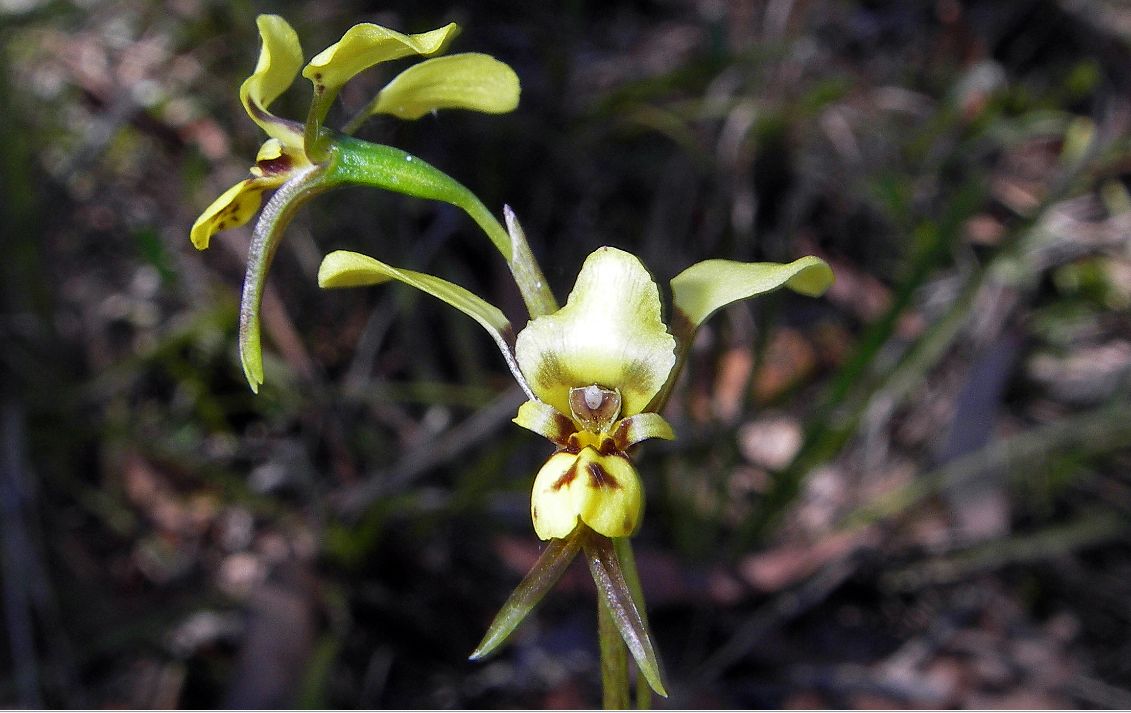
Diuris bracteata - OEH Photo
Funding Support For Coastal Councils: Grants
The latest round of funding under the NSW Government's Coastal and Estuary Grants Program has opened on 11 August 2020.
Minister for Local Government Shelley Hancock encouraged the State's 56 coastal councils to apply for funding to assist with planning and managing our State's coastline.
"Our coastline and estuaries are critical environments that support a huge variety of native flora and fauna in addition to being popular places for recreation," Mrs Hancock said.
"These grants will help councils plan for the future and protect and manage these unique natural assets."
There are 5 streams under the program: 1 for planning and studies which includes investigation, design and cost-benefit analysis and 4 for implementing works under each of the coastal management areas in the Coastal Management Act.
Works that have been funded under the program include coastal dune revegetation, wetland management, water quality monitoring as well as scoping studies for coastal management programs.
"This funding program is another example of how the NSW Government is supporting councils and their communities to protect their local environment," Mrs Hancock said.
The 2020-21 funding round for implementing works closes on 29 September 2020.
Councils are able to apply at any time during the 2020-21 financial year for funding planning and studies.
Further information and application forms are available here: Current coastal and estuary grants
Desperately Seeking Endangered Shrub Sightings
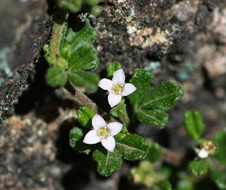 The search is on for an endangered plant, the beautiful Zieria obcordata, and residents in the central tablelands are being urged to be ready to report any sightings of this threatened species.
The search is on for an endangered plant, the beautiful Zieria obcordata, and residents in the central tablelands are being urged to be ready to report any sightings of this threatened species.
Native to New South Wales, Zieria obcordata is currently found in only two small populations near Wellington and Bathurst and they are about to bloom.
“This plant is special because it is found nowhere else in the world but the NSW central tablelands, and unfortunately it has been hit hard by the drought with less than 200 plants left in the wild,” said Darren Shelly, Senior Threatened Species Officer with the Department of Planning, Industry and the Environment.
“We think there might be more un-discovered populations of this Zieria on private properties between Wellington and Bathurst and we are asking for the local community’s help in reporting sightings of this rare plant.”
The Zieria obcordata is a small shrub, typically 10 to 40 centimetres high and can be identified by its dark green leaves composed of three wedge-shaped leaflets and its flowers, complete with four very small pale pink petals that fade rapidly to white.
“The plant usually flowers between August and October and grows on rocky hillsides or crevices between granite boulders, often in lines running downslope,” Mr Shelly said.
Local residents have already proved instrumental in ensuring the existing populations survived the recent drought and the plant’s other threats which include grazing by deer, goats and wallabies. Some members of the community have been volunteering for several years with the NSW Government’s Saving our Species program to save the Zieria obcordata.
The Central Tablelands Local Land Service (LLS) have also expressed interest in helping the Saving our Species team look for new populations of this threatened plant.
“There is a lot to say for the community spirit of the people of the central tablelands in protecting the environment in their local region and backyard and we are hoping residents will jump on board and also help the Zieria obcordata,” said Mr Shelly.
Sightings of the Zieria obcordata can be reported to – savingourspecies@environment.nsw.gov.au
For more information visit: Zieria obcordata
Photo in text: Zieria obcordata flowers Photo: Public Affairs/DPIE
Australia's farmers want more climate action – and they’re starting in their own (huge) backyards

The National Farmer’s Federation says Australia needs a tougher policy on climate, today calling on the Morrison government to commit to an economy wide target of net-zero greenhouse gas emission by 2050.
It’s quite reasonable for the farming sector to call for stronger action on climate change. Agriculture is particularly vulnerable to a changing climate, and the sector is on its way to having the technologies to become “carbon neutral”, while maintaining profitability.
Agriculture is a big deal to Australia. Farms comprise 51% of land use in Australia and contributed 11% of all goods and services exports in 2018–19. However, the sector also contributed 14% of national greenhouse gas emissions.
A climate-ready and carbon neutral food production sector is vital to the future of Australia’s food security and economy.

Paris Agreement Is Driving Change
Under the 2015 Paris Agreement, 196 countries pledged to reduce their emissions, with the goal of net-zero emissions by 2050. Some 119 of these national commitments include cutting emissions from agriculture, and 61 specifically mentioned livestock emissions.
Emissions from agriculture largely comprise methane (from livestock production), nitrous oxide (from nitrogen in soils) and to a lesser extent, carbon dioxide (from machinery burning fossil fuel, and the use of lime and urea on soils).
In Australia, emissions from the sector have fallen by 10.8% since 1990, partly as a result of drought and an increasingly variable climate affecting agricultural production (for example, wheat production).
But the National Farmers’ Federation wants the sector to grow to more than A$100 billion in farm gate output by 2030 – far higher than the current trajectory of $84 billion. This implies future growth in emissions if mitigation strategies are not deployed.

Runs On The Board
Players in Australia’s agriculture sector are already showing how net-zero emissions can be achieved.
In 2017, the Australian red meat sector committed to becoming carbon neutral by 2030. A number of red-meat producers have claimed to have achieved net-zero emissions including Arcadian Organic & Natural’s Meat Company, Five Founders and Flinders + Co.
Our research has shown two livestock properties in Australia – Talaheni and Jigsaw farms – have also achieved carbon neutral production. In both cases, this was mainly achieved through regeneration of soil and tree carbon on their properties, which effectively draws down an equivalent amount of carbon dioxide from the atmosphere to balance with their farm emissions.
Read more: Intensive farming is eating up the Australian continent – but there's another way
Other agricultural sectors including dairy, wool and cropping are actively considering their own emission reduction targets.
Carbon neutral wine is being produced, such as by Ross Hill, and Tulloch and Tahbilk.
Most of these examples are based on offsetting farm emissions – through buying carbon credits or regenerating soil and tree carbon - rather than direct reductions in emissions such as methane and nitrous oxide.
But significant options are available, or emerging, to reduce emissions of “enteric” methane – the result of fermentation in the foregut of ruminants such as cattle, sheep and goats.
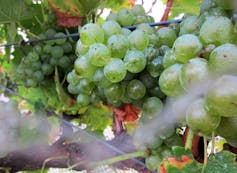
For example, livestock can be fed dietary supplements high in oils and tannins that restrict the microbes that generate methane in the animal’s stomach. Oil and tannins are also a byproduct of agricultural waste products such as grape marc (the solid waste left after grapes are pressed) and have been found to reduce methane emissions by around 20%.
Other promising technologies are about to enter the market. These include 3-NOP and Asparagopsis, which actively inhibit key enzymes in methane generation. Both technologies may reduce methane by up to 80%.
There are also active research programs exploring ways to breed animals that produce less methane, and raise animals that produce negligible methane later in life.
On farms, nitrous oxide is mainly lost through a process called “denitrification”. This is where bacteria convert soil nitrates into nitrogen gases, which then escape from the soil into the atmosphere. Options to significantly reduce these losses are emerging, including efficient nitrogen fertilisers, and balancing the diets of animals.
There is also significant interest in off-grid renewable energy in the agricultural sector. This is due to the falling price of renewable technology, increased retail prices for electricity and the rising cost to farms of getting connected to the grid.
What’s more, the first hydrogen-powered tractors are now available – meaning the days of diesel and petrol consumption on farms could end.

More Work Is Needed
In this race towards addressing climate change, we must ensure the integrity of carbon neutral claims. This is where standards or protocols are required.
Australian researchers have recently developed a standard for the red meat sector’s carbon neutral target, captured in simple calculators aligned with the Australian national greenhouse gas inventory. This allow farmers to audit their progress towards carbon neutral production.
Technology has moved a long way from the days when changing the diet of livestock was the only option to reduce farm emissions. However significant research is still required to achieve a 100% carbon neutral agriculture sector – and this requires the Australian government to co-invest with agriculture industries.
And in the long term, we must ensure measures to reduce emissions from farming also meet targets for productivity, biodiversity and climate resilience.
Read more: IPCC's land report shows the problem with farming based around oil, not soil ![]()
Richard Eckard, Professor & Director, Primary Industries Climate Challenges Centre, University of Melbourne
This article is republished from The Conversation under a Creative Commons license. Read the original article.
We composted 'biodegradable' balloons. Here's what we found after 16 weeks
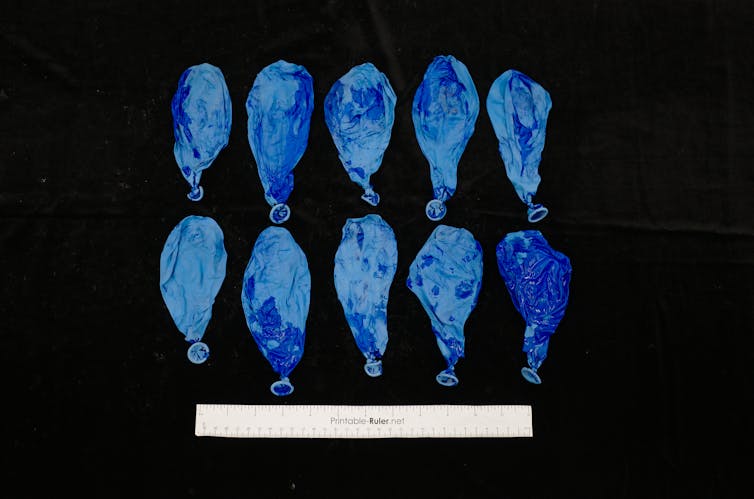
After 16 weeks in an industrial compost heap, we unearthed blue and white balloons and found them totally unscathed. The knots we spent hours painstakingly tying by hand more than four months ago were still attached, and sparkly blue balloons still glinted in the sun.
These balloons originally came from packages that advertised them as “100% biodegradable”, with the manufacturers assuring they were made of “100% natural latex rubber”. The implication is that these balloons would have no trouble breaking down in the environment.
Read more: Balloon releases have deadly consequences – we're helping citizen scientists map them
This appeals to eco-conscious consumers, but really just fuels corporate greenwashing — unsubstantiated claims of environmentally friendly and safe products.
Holding perfectly intact balloons in our hands after four months in industrial compost, we had cause to question these claims, and ran experiments.
What’s The Problem?
This problem is two-fold. First, balloons are additional plastic waste in the environment. They are lightweight and can travel on air currents far from the point of release. For example, one 2005 study found a balloon travelled more than 200 kilometres.
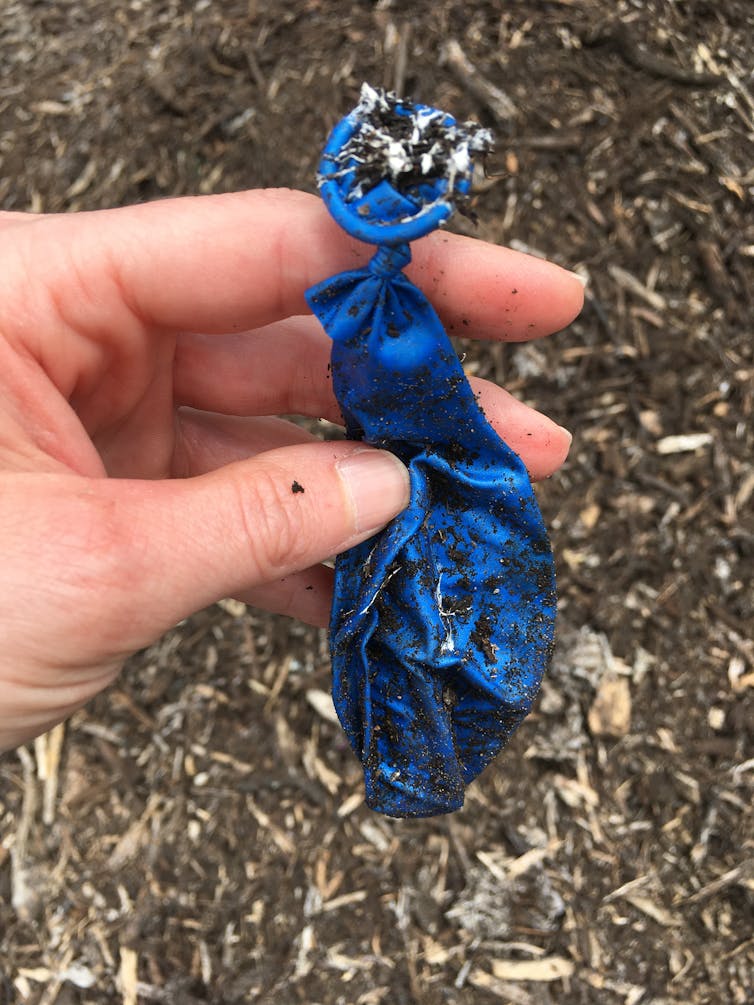
When they pop, they float back to the earth’s surface and land in, for example, the ocean or the desert, and wash up on beaches where animals can eat them, from sea turtles and seabirds to desert tortoises.
The stretchiness of balloons means they can get stuck in animals’ digestive tracts, which will cause choking, blockage, decreased nutrient absorption and effectively starve the animal.
Read more: How to get abandoned, lost and discarded 'ghost' fishing gear out of the ocean
Second, what most consumers don’t realise, is that to shape milky natural rubber latex sap into the product we know as a balloon, many additional chemicals need to be added to the latex.
These chemicals include antioxidants and anti-fogging (to counteract that cloudy look balloons can get), plasticisers (to make it more flexible), preservatives (to enable the balloon to sit in warehouses and store shelves for months), flame retardants, fragrance and, of course, dyes and pigments.
Even more chemicals have to be used to make the additives “stick” to the latex and to stick to each other, enabling them to work in tandem to create a product we expect to use for about 24 hours. So, the balloons can’t be “100% natural rubber latex”.

And yet, despite substantial evidence of harm and the presence of these chemicals, balloon littering persists. Balloon releases are common, with only some regional regulations in place, such as in New South Wales and the Sunshine Coast.
Lying For Decades
While some factions of the balloon industry denounce balloon releases, these claims are only recent.
For decades, the industry relied on one industry-funded study from 1989 which claimed that after six short weeks, balloons degraded “at about the same rate as oak tree leaves” and there was no way balloons were a threat to wildlife.
That study was not peer-reviewed, its methods are unclear and not repeatable, and the results are based on only six balloons.
Because balloons are frequently reported to be at sea, ingested by wild animals and washed up on beaches, it’s clear they’re not breaking down in only six weeks. Anecdotal studies have tested this to varying degrees, confirming balloons don’t break down.
Only one peer-reviewed scientific study has quantified balloon degradation, and that also occurred in 1989 — the same year as the industry study. They tested elasticity for up to one year, which means the balloons were intact for that whole time.
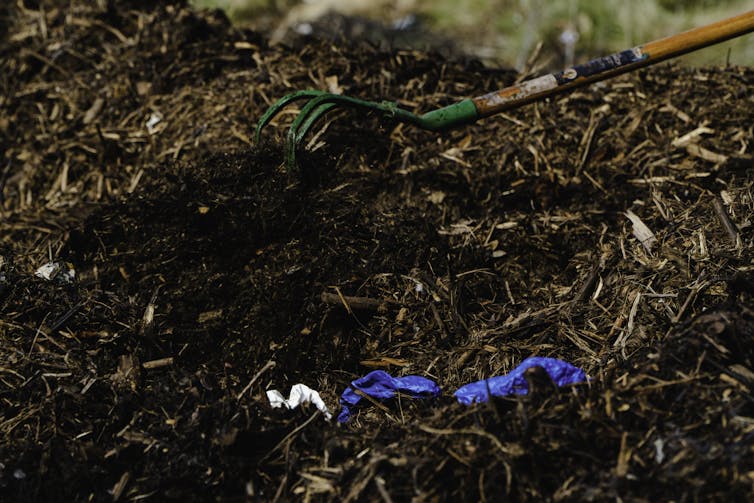
We wanted to know: has anything changed since 1989? And why aren’t there more studies testing balloon degradation, given the passion behind the balloon issue?
So, we set out to quantify exactly how long latex balloons would take to break down. And we asked if balloons degraded differently in different parts of the environment.
Our Experiment Tested Their Claims
Industrial composting standards require that the material completely disintegrates after 12 weeks and that the product is not distinguishable from the surrounding soil.
We designed an experiment: after exposing balloons to six hours of sunlight (to simulate typical use, for example, at an outdoor party), we put blue and white balloons in industrial compost, and in saltwater and freshwater tanks.
We allowed for aeration to simulate natural conditions, but otherwise, we left the balloons alone. Every two weeks, we randomly removed 40 balloons from each treatment. We photographed them to document degradation. Then we tested them.
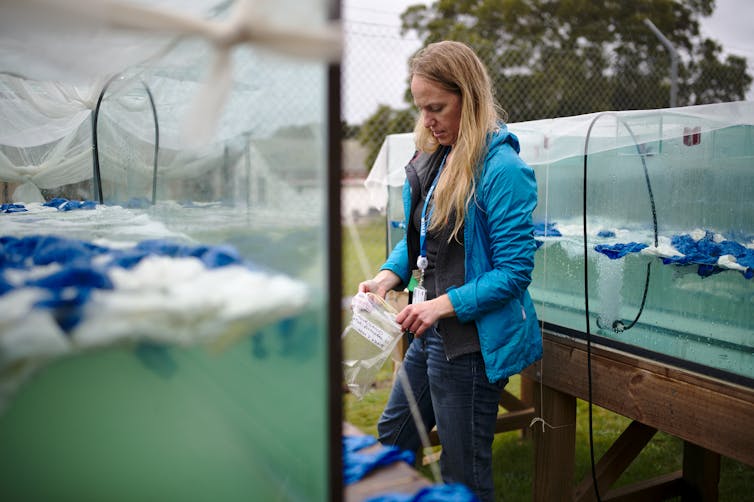
Were the balloons still stretchy? We tested this in the University of Tasmania engineering lab to determine tensile (resistence) strength. We found that in water tanks, the balloons became less stretchy, losing around 75% of their tensile strength. But if they had been composted, balloons retained their stretchiness.
Were the balloons still composed of the same things they started with? We tested this by taking spectral measurements of the balloons’ surface. The balloons showed signs they were exposed to ultra violet light in the water tanks, but not in the compost. This means their chemical composition changed in water, but only slightly.
Finally, and most importantly, did the balloons lose mass?
After 16 weeks, the balloons were still recognisably balloons, though they behaved a little differently in compost, water and saltwater. Some balloons lost 1–2% mass, and some balloons in freshwater gained mass, likely due to osmotic absorption of water.
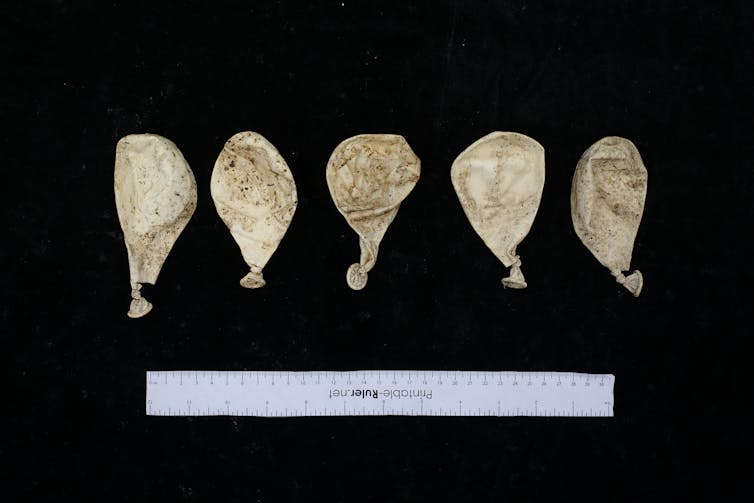
What Can We Do?
It’s clear latex balloons don’t meaningfully degrade in 16 weeks and will continue to pose a threat to wildlife. So what can we do as consumers? We offer these tips:
- do not release balloons outdoors
- do not use helium-filled balloons outdoors (this prevents accidental release, and saves helium), which is a critically limited resource
- if you use balloons, deflate and bin them after use
- consider balloon alternatives, like bubbles
- make educated purchases with federal Green Guidelines in mind.
Read more: There are some single-use plastics we truly need. The rest we can live without ![]()
Morgan Gilmour, Adjunct Researcher in Marine Science, University of Tasmania and Jennifer Lavers, Lecturer in Marine Science, University of Tasmania
This article is republished from The Conversation under a Creative Commons license. Read the original article.
'All things will outlast us': how the Indigenous concept of deep time helps us understand environmental destruction
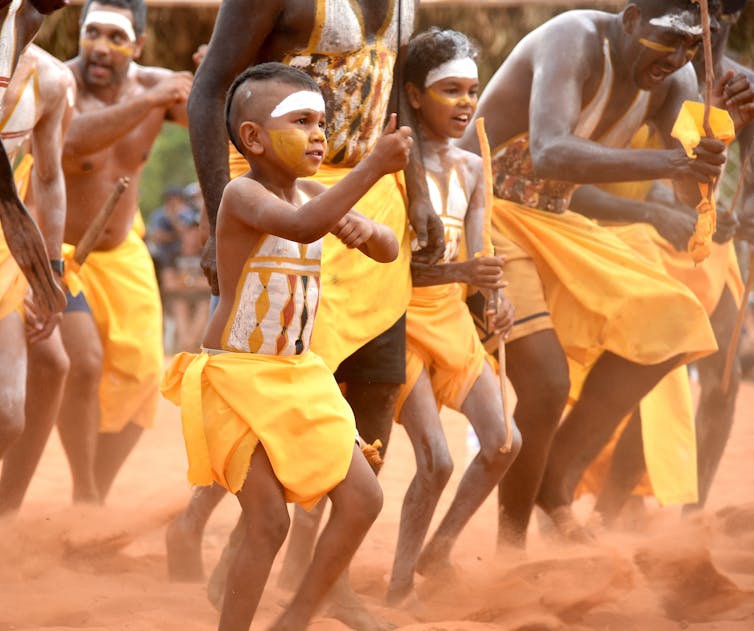
The bushfire royal commission is examining ways Indigenous land and fire management could improve Australia’s resilience to national disasters. On the face of it, this offers an opportunity to embrace Indigenous ways of knowing.
But one traditional practice unlikely to be examined is the Indigenous concept of “deep time”. This concept offers all Australians a blueprint for understanding the land we live on.
In the words of University of Technology, Sydney, Visiting Research Fellow and Yuwaalaraay/Gamilaraay woman Frances Peters-Little:
All things will outlast us, the land will change, and survive … Yes, the land will be different. But new things will come of it.
For non-Indigenous Australians like myself, the past summer of bushfires seemed to mark the end times. Indigenous Australians also grieved the enormous losses wrought last fire season – but their long perspective on history offers hope.
What Is Deep Time?
Deep time asks us to rethink our narrow conceptions of time by looking back far into Earth’s history, and looking forward far into the future.
The Indigenous Australian sense of history spans the 65,000 or more years they have lived on this continent. This goes way beyond the Western concept of “ancient history”, set in the Northern Hemisphere and reaching little beyond 6,000 years.
Australia’s deep human history covers everything Aboriginal people achieved before 1770 – the year marking the arrival of British navigator Lieutenant James Cook on the Endeavour – and 1788 when convicts under the governance of Arthur Phillip arrived.
Read more: Ancient Aboriginal stories preserve history of a rise in sea level
Different groups of Indigenous people witnessed these events. But they also witnessed the great climate dramas of the Pleistocene and the Holocene. They experienced the chilling cold and adapted to the drying up of key water sources such as Willandra Lakes in far west New South Wales.
Around Sydney, they witnessed river systems forming and changing course around Kamay or Botany Bay, and the lands of Port Phillip Bay rapidly filling with water. In Queensland, they witnessed their lands being submerged and islands such as Koba (Fitzroy Island) being created. Some are thought to have observed the Great Barrier Reef being formed and volcanoes erupting.
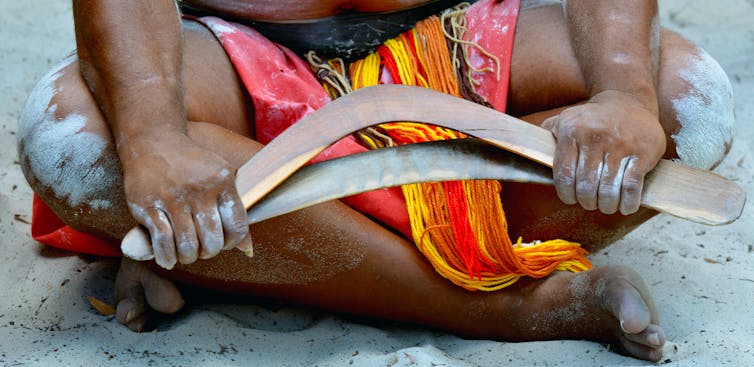
Beyond A Western Sense Of Time
The story of deep history cannot be gleaned from the kinds of written evidence left by Cook and Phillip in their 18th-century journals. Rather, information about the deep past is held in features of the landscape itself.
As the Anangu people of Uluru explain, the land contains proof of a spoken narrative, like a photograph. The land’s markings are the archives, the inscriptions revealing and proving deep history stories.
Nature can expose some of these stories. In southwestern Victoria last summer, for example, the bushfires uncovered more sections of the ancient stone fish traps at Budj Bim.
Read more: Our land is burning, and western science does not have all the answers
Similarly, in the late 1960s, erosive winds took away sand deposited over tens of thousands of years, revealing the grave site of Lady Mungo in southwestern NSW. Here, her remains were ritually burnt 40,000 years ago.
For Aboriginal people, these events constitute their ancestors revealing themselves; people of the past speaking directly to those in the present. It is almost as if the ancestors are living today – in what anthropologist WEH Stanner translated as an “everywhen”.
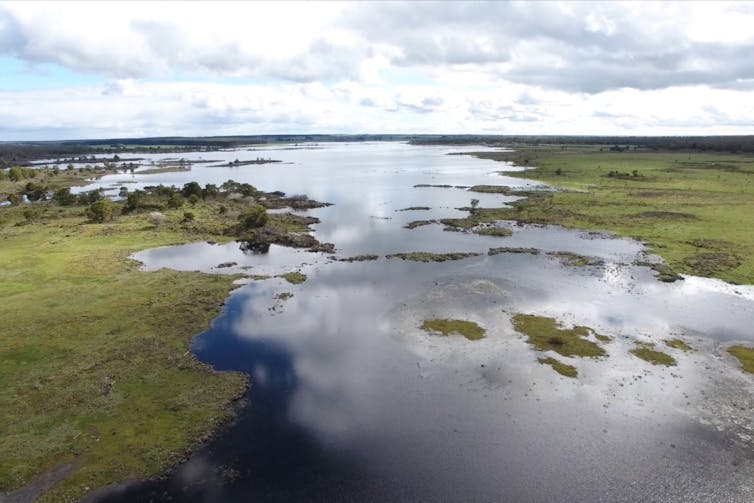
A Blueprint For Change
News in May that mining company Rio Tinto destroyed two rock shelters containing evidence of habitation dating back 46,000 years triggered public outrage. Perhaps this signals a burgeoning realisation that to understand our land, Australians need a history that stretches well beyond 1788.
To achieve this, Indigenous custodians, parks officers, historians and archaeologists might work together to develop a “deep time” research policy. This might include a national survey to assess the cultural heritage of Australia’s deep past.
Across Australia, many such sites – containing ancient rock art, engravings and the like – are little known and sometimes neglected. Surveying them will give all Australians insights into ecological change.
Read more: Strength from perpetual grief: how Aboriginal people experience the bushfire crisis
Of course, some of this work is already underway. Last summer’s Blue Mountains fires burnt some of these relics. But researchers and Indigenous people are working together to record and conserve remaining sites.
At Namadgi National Park near Canberra, rock art identifies animals of the region, such as dingoes, kangaroos and wallabies. Firefighters successfully saved the Yankee Hat rock art site, including ripping up its timber boardwalks to prevent it burning. Figures at the site were painted over hundreds, or possibly thousands of years.
Elsewhere, such as in the Kuringai National Park in NSW, rock engravings point to astronomical knowledge about the Milky Way. The appearance of an emu figure in the sky once signalled it was time to gather emu eggs.
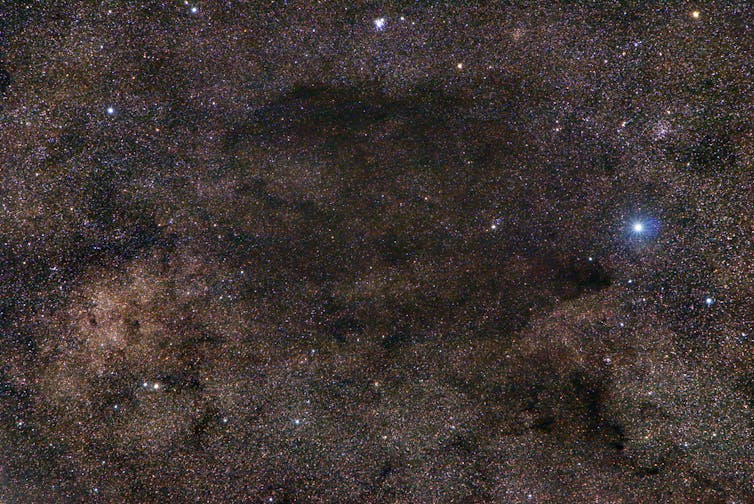
A Deeper Understanding
Embracing a deep, expansive understanding of non-linear time helps give context to disasters such as bushfires. On Australia Day this year as the fires raged around Canberra, Frances Peters-Little told me:
There’s a lot of talk of extinction. (But) Aboriginal people are focusing on rejuvenation. It is our responsibility to ensure the land is protected … As a culture that has lived here tens of thousands of years, we know this. We have been here too long to think it’s the end of things.
We must all think of ourselves not just in biographical time – inhabiting one lifespan – but rather, of the future generations to come and those long before us.
This article was reviewed by University of Technology, Sydney, Visiting Research Fellow and Yuwaalaraay/Gamilaraay woman Frances Peters-Little.![]()
Ann McGrath, Professor, Australian National University
This article is republished from The Conversation under a Creative Commons license. Read the original article.
Doodle Comer Swamp Nature Reserve Draft Plan Of Management: Public Consultation
The Doodle Comer Swamp Nature Reserve Draft Plan of Management is available for review and comment.
Public exhibition of the draft plan provides an important opportunity for members of the community to have a say in the future management of Doodle Comer Swamp Nature Reserve. Comments close 28 September 2020.
This plan has been prepared using a new format and presented as 2 separate documents:
- The plan of management which is the 'legal' document that will be provided to the Minister for formal adoption. This is the document we are seeking your feedback on.
- The planning considerations document supports the plan of management. It includes detailed information on park values (e.g. threatened species and cultural heritage) and threats to these values. A summary of this information is in the plan of management.
Doodle Comer Swamp Nature Reserve encompasses about half of the Doodle Comer Swamp, an ephemeral wetland listed in the National Directory of Important Wetlands and the largest wetland of its type in southern NSW. The catchment for Doodle Comer Swamp is unregulated and the wetland has an unaltered water flow regime, now uncommon in New South Wales inland wetlands and of high conservation value.
When inundated, Doodle Comer Swamp attracts large numbers of waterbirds that use the swamp for breeding and foraging. When dry, the wetland provides habitat for the threatened bush stone-curlew, listed as endangered in New South Wales. Other threatened animals found include brolga and superb parrot. The reserve contains several threatened ecological communities such as Inland Grey Box Woodland and Sandhill Pine Woodland.
Doodle Comer Swamp is part of the Country of the Wiradjuri speaking nation and is part of a larger network of swamps and lagoons across the Riverina that formed a significant part of the cultural landscape, sustaining the Wiradjuri with an extensive range of resources for thousands of years. A diverse range of Aboriginal sites exist in the reserve and surrounding area and in 2016 Doodle Comer was declared an Aboriginal place recognising these values and the wetland's special significance to Aboriginal culture.
What is a plan of management?
Parks and reserves established under the National Parks and Wildlife Act 1974 need to have a plan of management. The plan includes information on important park values and provides directions for future management. The plan of management is a legal document, and after the plan is adopted all operations and activities in the park must be in line with the plan. From time to time plans of management are amended to support changes to park management. Visit: Doodle Comer Swamp Nature Reserve Draft Plan of Management - PDF, 2.3MB
The National Parks and Wildlife Act sets out the matters that need to be considered when preparing a plan of management. These matters are addressed in the supporting Doodle Comer Swamp Nature Reserve Draft Plan of Management: Planning considerations document.
Why is a plan being prepared now?
Since the park`s reservation in 2011, it has been managed according to a statement of management intent. After a park's reservation and before the release of its plan of management, a statement of management intent is prepared outlining the management principles and priorities for the park's management. This statement documents the key values, threats and management directions for the park. It is not a statutory document and a plan of management will still need to be prepared according to the National Parks and Wildlife Act 1974.
Publication of a draft or final plan will replace the statement of management intent for the relevant parks covered.
What opportunities will the community have to comment?
The draft plan of management is on public exhibition until 28 September 2020 and anyone can review the plan of management and provide comments.
When will the plan of management be finalised?
At the end of the public exhibition period in September 2020 we will review all submissions, prepare a submissions report and make any necessary changes to the draft plan of management. The Far West Regional Advisory Committee and the National Parks and Wildlife Advisory Council will then review the plan along with the submissions and report, as required by the National Parks and Wildlife Act.
Once their input has been considered and any further changes made to the plan of management, we provide the plan to the Minister for Energy and Environment. The plan of management is finalised when the Minister formally adopts the plan under the National Parks and Wildlife Act. Once a plan is adopted it is published on the Department website and a public notice is advertised in the NSW Government Gazette.
How can I get more information about the draft plan?
For further information on the plan of management please contact the Park Management Planning Team at npws.parkplanning@environment.nsw.gov.au.
How can I comment on the draft plan?
Public exhibition for the plan of management is from 26 June 2020 until 28 September 2020. You are invited to comment on the draft plan by sending a written submission during this time.
Have your say
Public exhibition is from 26 June 2020 to 28 September 2020.
You can provide your written submission in any of the following ways:
Post your written submission to:
Manager Planning Evaluation and Assessment
Locked Bag 5022
Parramatta NSW 2124
Email your submission to: npws.parkplanning@environment.nsw.gov.au
Make a submission online by using the online form here
Tollingo Nature Reserve And Woggoon Nature Reserve Draft Plan Of Management: Public Consultation
The Tollingo Nature Reserve and Woggoon Nature Reserve Draft Plan of Management is available for review and comment.
Public exhibition of the draft plan provides an important opportunity for members of the community to have a say in the future management of Tollingo Nature Reserve and Woggoon Nature Reserve. Comments close 28 September 2020.
This plan has been prepared using a new format which is presented as two separate documents:
- The plan of management which is the legal document that will be provided to the Minister for formal adoption. This is the document we are seeking your feedback on.
- The planning considerations document supports the plan of management. It includes detailed information on park values (e.g. threatened species and cultural heritage) and threats to these values. A summary of this information is provided in the plan of management.
Tollingo Nature Reserve and Woggoon Nature Reserve are significant as two of the largest remaining mallee remnants in New South Wales. The largely intact old-age mallee vegetation is rare in the Central West, which is mostly used for agriculture. The reserves provide habitat for the endangered malleefowl and other native animals.
Tollingo Nature Reserve is shared Country for the Ngiyampaa and Wiradjuri people, while Woggoon Nature Reserve is within Wiradjuri traditional Country.
What is a plan of management?
Parks and reserves established under the National Parks and Wildlife Act 1974 need to have a plan of management. The plan includes information on important park values and provides directions for future management. The plan of management is a legal document, and after the plan is adopted all operations and activities in the park must be in line with the plan. From time to time plans of management are amended to support changes to park management.
The National Parks and Wildlife Act sets out the matters that need to be considered when preparing a plan of management. These matters are addressed in the supporting Tollingo Nature Reserve and Woggoon Nature Reserve Draft Planning Considerations document. This document may be updated from time to time, for example, to include new information on the values of the park (e.g. new threatened species), new management approaches (e.g. a new pest management technique) or new park programs. Visit Tollingo Nature Reserve and Woggoon Nature Reserve Draft Plan of Management - PDF 2.3MB
Why is a plan being prepared now?
This plan of management will replace the statement of management intent which was approved in 2014. Statements of management intent are non-statutory documents which summarise the key values and management directions for a park.
Since reservation in 1988 and 1974 respectively, Tollingo and Woggoon nature reserves have been managed according to a statement of management intent. After a park's reservation and before the release of its plan of management, a statement of management intent is prepared outlining the management principles and priorities for the park's management. This statement documents the key values, threats and management directions for the park. It is not a statutory document and a plan of management will still need to be prepared according to the National Parks and Wildlife Act 1974. Publication of a draft or final plan will replace the statements of management intent for the relevant parks covered.
What opportunities will the community have to comment?
The draft plan of management and planning considerations are on public exhibition until 28 September 2020 and anyone can provide comments.
When will the plan of management be finalised?
At the end of the public exhibition period in September 2020, National Parks and Wildlife Service (NPWS) will review all submissions, prepare a submissions report and make any necessary changes to the draft plan of management. The West Regional Advisory Committee and the National Parks and Wildlife Advisory Council will then review the plan along with the submissions and report, as required by the National Parks and Wildlife Act.
Once their input has been considered and any further changes made to the plan of management, we provide the plan to the Minister for Energy and Environment. The plan of management is finalised when the Minister adopts the plan under the National Parks and Wildlife Act. Once a plan is adopted it is published on the Department's website.
How can I get more information about the draft plan?
For further information on the plan of management please contact the NPWS Park Management Planning Team at npws.parkplanning@environment.nsw.gov.au
Where can I see a printed copy of the draft plan?
Hard copies are available for viewing at the following locations:
- National Parks and Wildlife Service (NPWS) office, Camp Street, Forbes
- Condobolin Library, 130 Bathurst Street, Condobolin
How can I comment on the draft plan?
Public exhibition for the plan of management is from 26 June until 28 September 2020. You are invited to comment on the draft plan by sending a written submission during this time.
Your privacy
Your submission will be provided to a number of statutory advisory bodies (including the relevant regional advisory committee and the National Parks and Wildlife Advisory Council). Your comments on the draft plan may include 'personal information'. the Department complies with the NSW Privacy and Personal Information Protection Act 1998 which regulates the collection, storage, access, amendment, use and disclosure of personal information. See our privacy webpage for details. Information that in some way identifies you may be gathered when you use our website or send us correspondence.
If an application to access information under the Government Information (Public Access) Act 2009 requests access to your submission, your views about release will be sought if you have indicated that you object to your submission being made public.
While all submissions count, they are most effective when we understand your ideas and the outcomes you want for park management. Some suggestions to help you write your submission are:
- Write clearly and be specific about the issues that are of concern to you.
- Note which part or section of the plan your comments relate to.
- Give reasoning in support of your points – this makes it easier for us to consider your ideas and will help avoid misinterpretation.
- Tell us specifically what you agree/disagree with and why you agree/disagree.
- Suggest solutions or alternatives to managing the issue if you can.
Have your say
Public exhibition is from 26 June 2020 to 28 September 2020.
You can provide your written submission in any of the following ways:
Post your written submission to:
Manager Planning Evaluation and Assessment
Locked Bag 5022
Parramatta NSW 2124
Email your submission to: npws.parkplanning@environment.nsw.gov.au
Make a submission online by using the online form here
Limeburners Creek National Park, Goolawah National Park And Goolawah Regional Park: Public Consultation
Planning for the future –NSW National Parks and Wildlife Service is preparing a new plan of management for Limeburners Creek National Park, Goolawah National Park and Goolawah Regional Park.
These parks are in the traditional Country of the Dunghutti and Birpai Aboriginal Peoples. The parks play a fundamental role in the lives of local Aboriginal people, helping to maintain a tangible link to the past and enabling continued connections to Country.
The existing plan of management for Limeburners Creek National Park was written in 1998. The areas that are now Goolawah National Park and Goolawah Regional Park were formerly Goolawah State Park and Crown land. Initial community consultation about the Goolawah parks was undertaken in 2012, soon after they were transferred to National Parks and Wildlife Service.
Since this time large new areas have been added to the parks, including the intertidal zone on some of the beaches. There has also been a steady increase in visitors, and new recreational uses have become popular. Information about the values of the park has improved and new approaches to managing fire, pests and weeds have been developed.
Accommodating all of these visitors, maintaining the unique visitor experience and protecting the environment is challenging. Good planning is essential to manage increasing demand and provide sustainable visitor facilities and opportunities while minimising impacts and retaining the natural and low key nature of this beautiful stretch of coast. The development of a new combined plan of management will help to protect the parks' unique values and improve the effectiveness of how we manage the parks.
What opportunities will the community have to contribute to the development of a new plan of management?
Previous consultation, including a community forum, identified a range of issues important to the local community which will be considered in the new plan. It is now time to reach out and reconnect with our neighbours, stakeholders and local communities, as well as extending the invitation to the wider community of park users.
There are now 2 opportunities to be involved in the development of the plan of management for Goolawah Regional Park and Goolawah and Limeburners Creek national parks:
- During the development of the draft plan - register your interest below to receive updates and be notified of further consultation dates. Complete the form to provide your ideas on what you believe are the most important values of the parks and how they should be managed in the future. Your input will be used to draft a plan that reflects community values and aspirations.
- During public exhibition of the draft plan - there will be another opportunity to have your say when the draft plan of management is completed and put on public exhibition for 90 days. Anyone can submit comments on the draft plan during this time.
Register your interest
Complete the online form here to register your interest, provide initial input and be notified of further consultation dates. Tell us what is important to you about the parks and what you would like to see in the future. Comments close 30 October 2020.
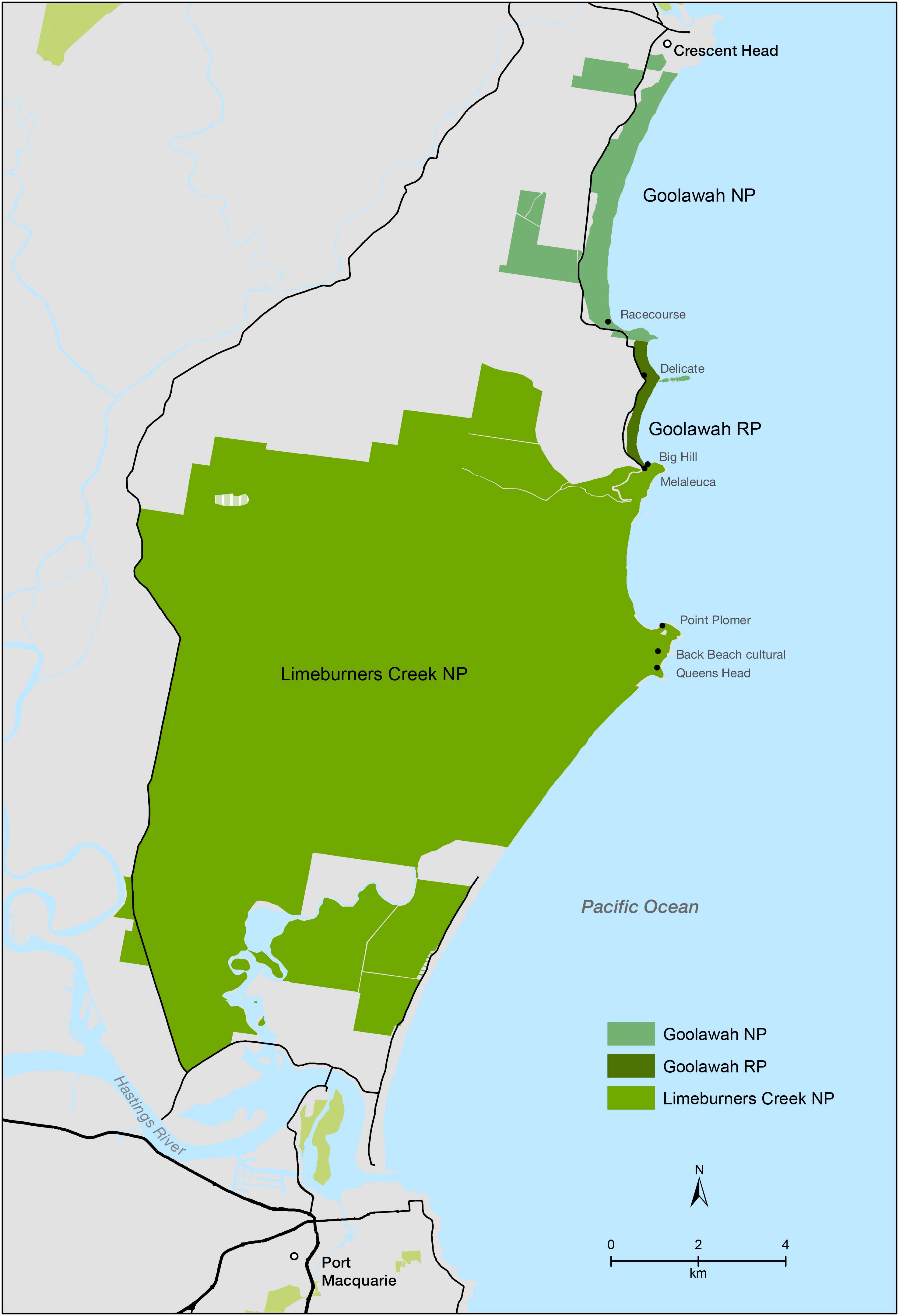
Limeburners Creek National Park, Goolawah National Park and Goolawah Regional Park engagement map Photo: DPIE
Echidna Season
Echidna season has begun. As cooler days approach, our beautiful echidnas are more active during the days as they come out to forage for food and find a mate. This sadly results in a HIGH number of vehicle hits.
What to do if you find an Echidna on the road?
- Safely remove the Echidna off the road (providing its safe to do so).
- Call Sydney Wildlife or WIRES
- Search the surrounding area for a puggle (baby echidna). The impact from a vehicle incident can cause a puggle to roll long distances from mum, so please search for these babies, they can look like a pinky-grey clump of clay
What to do if you find an echidna in your yard?
- Leave the Echidna alone, remove the threat (usually a family pet) and let the Echidna move away in it's own time. It will move along when it doesn't feel threatened.
If you find an injured echidna or one in an undesirable location, please call Sydney Wildlife on 9413 4300 for advice.
www.sydneywildlife.org.au
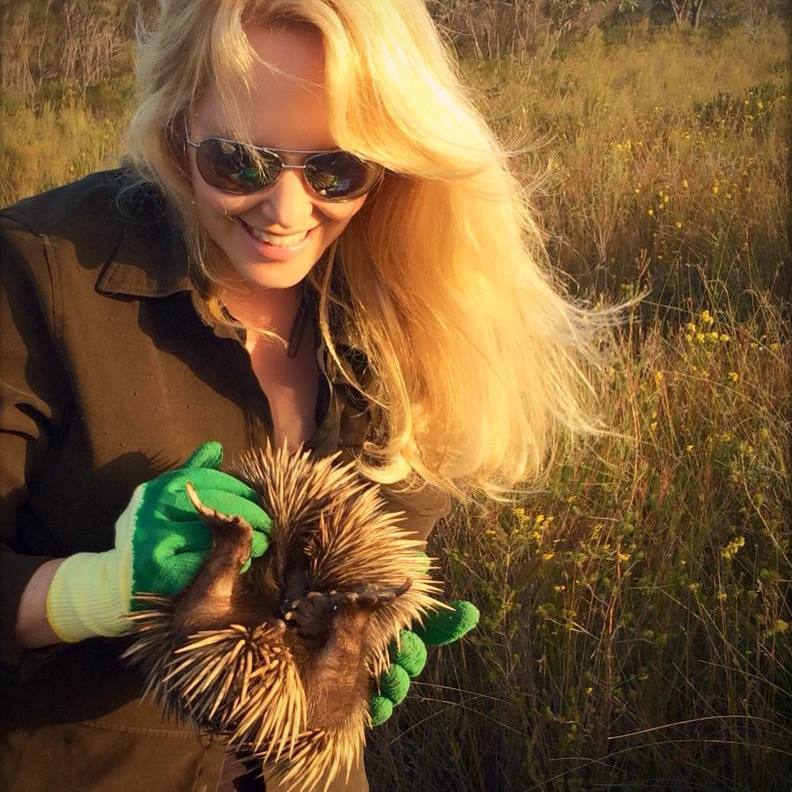
Lynleigh Greig, Sydney Wildlife, with a rescued echidna being returned to its home
 New Shorebird Identification Booklet
New Shorebird Identification Booklet
The Migratory Shorebird Program has just released the third edition of its hugely popular Shorebird Identification Booklet. The team has thoroughly revised and updated this pocket-sized companion for all shorebird counters and interested birders, with lots of useful information on our most common shorebirds, key identification features, sighting distribution maps and short articles on some of BirdLife’s shorebird activities.
The booklet can be downloaded here in PDF file format: http://www.birdlife.org.au/documents/Shorebird_ID_Booklet_V3.pdf
Paper copies can be ordered as well, see http://www.birdlife.org.au/projects/shorebirds-2020/counter-resources for details.
Download BirdLife Australia's children’s education kit to help them learn more about our wading birdlife
Shorebirds are a group of wading birds that can be found feeding on swamps, tidal mudflats, estuaries, beaches and open country. For many people, shorebirds are just those brown birds feeding a long way out on the mud but they are actually a remarkably diverse collection of birds including stilts, sandpipers, snipe, curlews, godwits, plovers and oystercatchers. Each species is superbly adapted to suit its preferred habitat. The Red-necked Stint is as small as a sparrow, with relatively short legs and bill that it pecks food from the surface of the mud with, whereas the Eastern Curlew is over two feet long with a exceptionally long legs and a massively curved beak that it thrusts deep down into the mud to pull out crabs, worms and other creatures hidden below the surface.
Some shorebirds are fairly drab in plumage, especially when they are visiting Australia in their non-breeding season, but when they migrate to their Arctic nesting grounds, they develop a vibrant flush of bright colours to attract a mate. We have 37 types of shorebirds that annually migrate to Australia on some of the most lengthy and arduous journeys in the animal kingdom, but there are also 18 shorebirds that call Australia home all year round.
What all our shorebirds have in common—be they large or small, seasoned traveller or homebody, brightly coloured or in muted tones—is that each species needs adequate safe areas where they can successfully feed and breed.
The National Shorebird Monitoring Program is managed and supported by BirdLife Australia.
This project is supported by Glenelg Hopkins Catchment Management Authority and Hunter Local Land Services through funding from the Australian Government’s National Landcare Program. Funding from Helen Macpherson Smith Trust and Port Phillip Bay Fund is acknowledged.
The National Shorebird Monitoring Program is made possible with the help of over 1,600 volunteers working in coastal and inland habitats all over Australia.
The National Shorebird Monitoring program (started as the Shorebirds 2020 project initiated to re-invigorate monitoring around Australia) is raising awareness of how incredible shorebirds are, and actively engaging the community to participate in gathering information needed to conserve shorebirds.
In the short term, the destruction of tidal ecosystems will need to be stopped, and our program is designed to strengthen the case for protecting these important habitats.
In the long term, there will be a need to mitigate against the likely effects of climate change on a species that travels across the entire range of latitudes where impacts are likely.
The identification and protection of critical areas for shorebirds will need to continue in order to guard against the potential threats associated with habitats in close proximity to nearly half the human population.
Here in Australia, the place where these birds grow up and spend most of their lives, continued monitoring is necessary to inform the best management practice to maintain shorebird populations.
BirdLife Australia believe that we can help secure a brighter future for these remarkable birds by educating stakeholders, gathering information on how and why shorebird populations are changing, and working to grow the community of people who care about shorebirds.
To find out more visit: http://www.birdlife.org.au/projects/shorebirds-2020/shorebirds-2020-program
Pittwater Reserves
Aussie Bread Tags Collection Points

Students Take A Seat At The Table
August 17, 2020
Students at NSW public schools have two new platforms to help shape their education system.
Minister for Education Sarah Mitchell today announced the first Minister's Student Council, a group of students that will have a direct influence on education and school policy that affects students.
A new online Student Voice Hub has also launched, giving all NSW students a platform to share their views and creativity with the wider community.
Ms Mitchell said that the two new platforms are exciting and important tools for students, giving them greater capacity to provide feedback to government.
"Students are at the centre of everything we do in education and these platforms empower them to influence public policy," Ms Mitchell said.
"The Student Council will be the peak forum for interaction between NSW public school students, the department and myself.”
Ms Mitchell said students would decide the exact design of the council but it is expected that all secondary students will have the opportunity to provide input.
“Delegates will be elected from a range of secondary schools to form the council and will meet with decision-makers within the NSW schools system to develop policy,” Ms Mitchell said.
The council is reinforced by the new Student Voice Hub strengthening the ongoing engagement of students with the department, each other and the wider community.
Ms Mitchell said the Student Voice Hub is a partnership in learning and listening that will play a key role in building a better education system as student perspectives, experiences and aspirations shape and enrich our schools and communities.
“The Student Voice Hub would also provide students opportunities to refine their writing and content creation skills along with pitching their stories and ideas," Ms Mitchell said.
"As part of the submission process to the hub, students will have the opportunity to refine their ideas and articles.”
The first elected Minister’s Student Council will begin in 2021. Further information about being involved in the council will be provided to school principals.
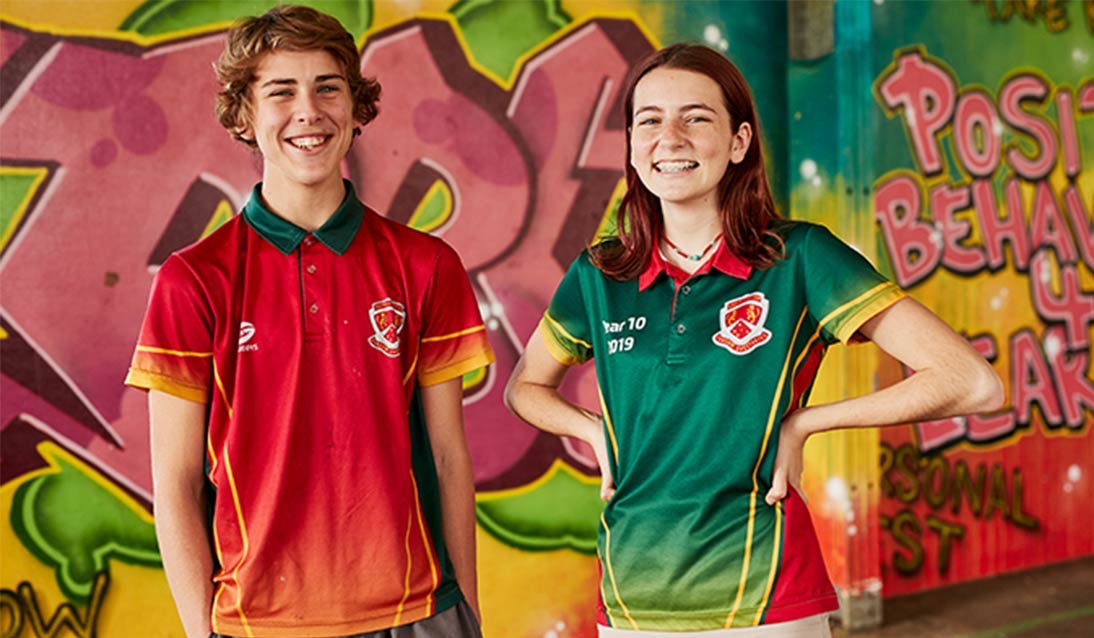
Meanwhile... Back At The Ranch
This expression originated as a stock subtitle in silent movies and at first the reference to the ranch was literal.
Later, as the phrase became a cliché, it was used more and more loosely and with a growing sense of mockery or levity, often with a vague focus, but often to indicate a time lapse - a period of waiting...waiting....waiting.
The film below is an example of early western films from the silent era. Found at the Internet Archives, where you can access tons of old movies and books, this one has been chopsen to share with you as it has a few singularities and historic footage.
Sky High (1922) was filmed on location at The Grand Canyon and with nicely integrated aerial photography to boot, some of the first of it's kind. This is a showcase of Tom Mix, legendary real life cowboy, at his best. Riding hard, fighting hard, saving the day and the damsel in distress . It includes one take stunt work as well. Late in the picture a white horse Tom is riding takes a nasty, unintentional fall. Tom re-mounts and continues with the shot in hot pursuit. It's a very physical film in many ways.
J. Farrell MCDonald makes a couple of brief appearances as the outlaw leader and shows some subtle sensitivity. McDonald was a very good actor who would not hit his stride until sound came in with mature roles of various types in both "A" & "B" pictures.
Thomas Edwin Mix (born Thomas Hezikiah Mix; January 6, 1880 – October 12, 1940) was an American film actor and the star of many early Western movies between 1909 and 1935. Mix appeared in 291 films, all but nine of which were silent movies. He was Hollywood's first Western star and helped define the genre as it emerged in the early days of the cinema.
Mix was born January 6, 1880, in Mix Run, Pennsylvania, about 62 miles (100 km) north of State College, Pennsylvania, to Edwin Elias Mix and Elizabeth Heistand. He grew up in nearby DuBois, Pennsylvania, where his father, a stable master for a wealthy lumber merchant, taught him to ride and love horses. He spent time working on a local farm owned by John DuBois, a lumber businessman. He had dreams of being in the circus and was rumored to have been caught by his parents practising knife-throwing tricks against a wall, using his sister as an assistant.
In April 1898, during the Spanish–American War, he enlisted in the Army under the name Thomas E. (Edwin) Mix. His unit never went overseas, and Mix later failed to return for duty after an extended furlough when he married Grace I. Allin on July 18, 1902. Mix was listed as AWOL on November 4, 1902, but was never court-martialed nor apparently even discharged. His marriage to Allin was annulled after one year. In 1905, Mix married Kitty Jewel Perinne, but this marriage also ended within a year. He next married Olive Stokes on January 10, 1909, in Medora, North Dakota. On July 13, 1912, Olive gave birth to their daughter Ruth.
In 1905, Mix rode in President Theodore Roosevelt's inaugural parade with a group of 50 horsemen led by Seth Bullock, which included several former Rough Riders. Years later, Hollywood publicists muddled this event to imply that Mix had been a Rough Rider himself.
Mix went to Oklahoma and lived in Guthrie, working as a bartender and other odd jobs. He was briefly night marshal[3] of Dewey, Oklahoma, in 1911. He eventually found employment at the Miller Brothers 101 Ranch, one of the largest ranching businesses in the United States, covering 101,000 acres (41,000 ha), hence its name. The ranch had its own touring Wild West show in which Mix appeared. He stood out as a skilled horseman and expert shot, winning national riding and roping contests at Prescott, Arizona, in 1909, and Canon City, Colorado, in 1910.
Mix began his film career as a supporting cast member with the Selig Polyscope Company. His first appearance was in a short film, The Cowboy Millionaire, released on October 21, 1909. In 1910, he appeared as himself in a short documentary film, Ranch Life in the Great Southwest, in which he displayed his skills as a cattle wrangler. Shot at the Selig studio in the Edendale district of Los Angeles (now known as Silver Lake), the film was a success, and Mix became an early motion picture star.
Mix performed in more than 100 films for Selig, many of which were filmed in Las Vegas, New Mexico. While with Selig he co-starred in several films with Victoria Forde, and they fell in love. He divorced Olive Stokes in 1917. By then, Selig Polyscope had encountered severe financial difficulties, and Mix and Forde both subsequently signed with Fox Film Corporation, which had leased the Edendale studio. The Fox Film Corporation was an American company that produced motion pictures, formed by William Fox on February 1, 1915. It was the corporate successor to his earlier Greater New York Film Rental Company and Box Office Attractions Film Company. Mix and Forde married in 1918 and had a daughter, Thomasina (Tommie) Mix, in February 1922.
Mix made more than 160 cowboy films throughout the 1920s. These featured action-oriented scripts contrasted with the documentary style of his work with Selig. Heroes and villains were sharply defined and a clean-cut cowboy always saved the day. Millions of American children grew up watching his films on Saturday afternoons. His intelligent and handsome horse, known as "Tony the Wonder Horse", also became a celebrity. Mix did his own stunts and was frequently injured.
In 1913, Mix moved his family to a ranch he purchased in Prescott called Bar Circle A Ranch. He spent a lot of time at the ranch when taking a break from filming. A number of the movies were actually filmed in the Prescott home. During this time, Mix had success in the local Prescott Frontier Days rodeo, which lays claim to being the "world's oldest rodeo." In 1920, he took first prize in a bull-riding contest. Today, his Bar Circle A Ranch developed into a planned community called Yavapai Hills where there is still a street named Bar Circle Ranch Road.
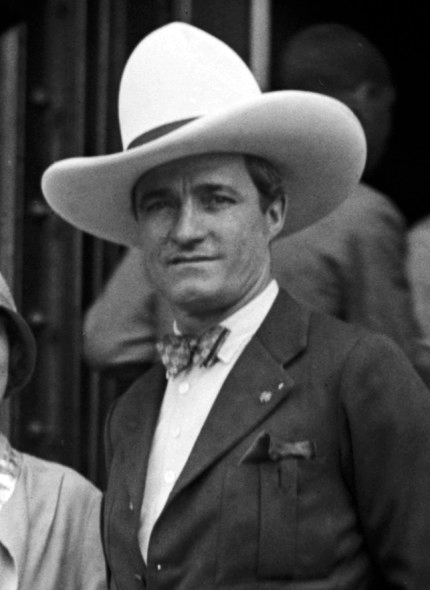
Tom Mix in 1925, National Photo Company - This image is available from the United States Library of Congress's Prints and Photographs division under the digital ID npcc.13634.
Mix's salary at Fox reached $7,500 a week. Gossip columnist Louella Parsons wrote that he had his initials in electric lights on the top of his house. His performances were noted for their realism and for screen-friendly action stunts and horseback riding, attention-grabbing cowboy costumes, and showmanship. At the Edendale lot, Mix built a 12-acre (4.9 ha) shooting set called Mixville. Loaded with western props and furnishings, it has been described as a "complete frontier town, with a dusty street, hitching rails, a saloon, jail, bank, doctor's office, surveyor's office, and the simple frame houses typical of the early Western era."[This quote needs a citation] Near the back of the lot an Indian village of lodges was ringed by miniature plaster mountains which were said to be, on screen, "ferociously convincing".[This quote needs a citation] The set also included a simulated desert, a large corral, and (to facilitate interior shots) a ranch house with no roof.
In 1929, Mix was a pallbearer at the funeral of Wyatt Earp.
Mix appeared with the Sells-Floto Circus in 1929, 1930, and 1931 at a reported weekly salary of $20,000 (equivalent to $298,000 in 2019). He and Forde divorced in 1931. Meanwhile, the Great Depression (along with the actor's free-spending ways and many wives) reportedly had wiped out most of his savings. In 1932, he married his fifth wife, Mabel Hubbell Ward. Universal Pictures approached him that year with an offer to perform in "talkies," which included script and cast approval. He acted in nine films for Universal, but because of injuries he received while filming, he was reluctant to do any more. Mix then appeared with the Sam B. Dill circus, which he reportedly bought two years later (1935).
Mix's last screen appearance was a 15-episode sound Mascot Pictures serial, The Miracle Rider (1935); he received $40,000 for the four weeks of filming. Outdoor action sequences for the production were filmed primarily on the Iverson Movie Ranch in Chatsworth, California, on the outskirts of Los Angeles. The site was known for its huge sandstone boulders, and one of them later became known as Tom Mix Rock when it was discovered it had been used in The Miracle Rider. In one episode, Mix was filmed descending from the top of the rock, with boot holes carved into it to assist him in making the descent. The rock and the boot holes, although unmarked, is in the Garden of the Gods park in Chatsworth.
Also in 1935, Texas governor James Allred named Mix an honorary Texas Ranger. Mix returned to circus performing, now with his eldest daughter Ruth, who appeared in some of his films. In 1938, he went to Europe on a promotional trip, leaving Ruth behind to manage the circus. Without him, however, the circus soon failed, and he later excluded her from his will. Mix had reportedly made over $6 million (equivalent to $112 million in 2019) during his 26-year film career.
On October 12, 1940, after visiting Pima County Sheriff Ed Echols in Tucson, Arizona, Mix headed north towards Phoenix on U.S. Highway 80 (now Arizona State Route 79), driving his 1937 Cord 812 Phaeton. He stopped to call his agent at the Oracle Junction Inn, a popular gambling and drinking establishment, then continued toward Phoenix. About eighteen miles south of Florence, Mix came upon construction barriers at a bridge washed away by a flash flood. Unable to stop in time, his car swerved twice, then overturned in a gully. A large aluminium suitcase containing money, traveller's checks, and jewels, situated on the package shelf behind his head, hurtled forward and struck him, breaking his neck. He was 60 years old.
His funeral took place at the Little Church of the Flowers in Glendale, California, on October 16, 1940, and was attended by thousands of fans and Hollywood personalities. He was interred in the Forest Lawn Memorial Park Cemetery.
Tom Mix was the acknowledged "King of Cowboys" when Ronald Reagan and John Wayne were young, and the influence of his screen persona can be seen in their approach to portraying cowboys. When an injury caused football player Marion Morrison (later known as John Wayne) to drop out of the University of Southern California, Mix helped him find work moving props in the back lot of Fox Studios. That was the beginning of Wayne's Hollywood career.
Tony the Wonder Horse starred in over two dozen silent and sound films during his career, becoming a celebrity in his own right. When Mix placed his handprints in the concrete outside Grauman's Chinese Theatre in 1927, Tony’s hoofprints were placed alongside them. He was the first horse to be given equal billing with his human costar, and was featured in the title of three movies: Just Tony (1922), Oh! You Tony (1924), and Tony Runs Wild (1926). Tony is listed as appearing in 34 films between 1922 and 1932. Just Tony is based on a Max Brand novel, Alcatraz. Tony's image appeared on film posters, his name was included in a number of film titles, and he accompanied Mix on international publicity tours. Tony was immortalized in a series of junior novels and comic books, including the 1934 children's book Tony and his Pals.
Tony was famous in part because Mix, the film industry, and the media were able to anthropomorphise him. In the films, his horseness was continually reaffirmed; at the same time, so was his ability to understand language, what was going on around him, and why. Animals are not complicit in the process by which they are made to mean something.
Tony is most known for his intelligence and ability to perform remarkable stunts, many of which would not be allowed today due to the danger involved. Tony performed in the years before the American Humane Association oversaw the use of animals on American productions. Since animals do not 'agree' to be actors (cannot verbalise agreement), the American Humane Association began to oversee how animal labor was created, filmed, and commercialised in 1940, eight years after Tony's retirement.
Mix reportedly did not have to train Tony, but simply show him what to do for each feat. Mix could convey any sort of message to the pony by touches of the hand or fingers on Tony's neck, although speculation existed that whips, strong bits, and spurs were used. Such stunts included untying Mix’s hands, opening gates, jumping over high fences, getting tangled in ropes, loosening his reins, rescuing Mix from fire, jumping from one cliff to another, and running after trains. In the 1926 film The Great K & A Train Robbery (Fox Film Corporation), Mix jumps Tony through a glass window into a building and rides him alongside a speeding train. In the film Trailin' (1921) Mix and Tony have a bridge slashed from under them, and uncut footage shows the pair tipping over to the river below.[15]
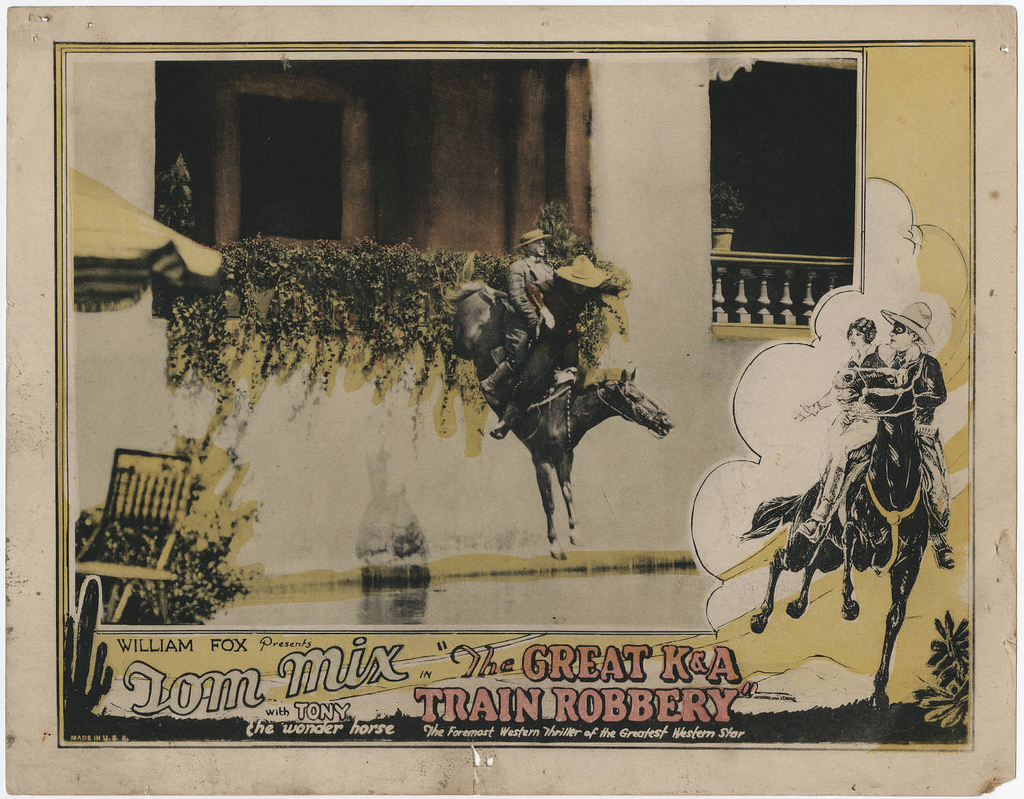
Lobby card for The Great K & A Train Robbery (1926) giving billing to "Tony the wonder horse."
Besides film, Tony was also in the Sells Floto Circus with Tom Mix as his rider. A program from the circus in 1931 made a statement about the bond between the pair:
Every patron of the motion picture theatre knows Tom Mix and his wonder horse Tony, who for years have been almost inseparable ... Tom is the only master Tony ever had and the only person who has been on his back, which may partly account for their extreme love for each other. — Paul E. Mix, The Life and Legend of Tom Mix
Tony retired from the film industry in 1932 at the age of 22, when he was slightly injured on the set of his last movie, The Fourth Horseman (1932). Following Tony's retirement, Tom Mix began featuring another horse of similar colour and appearance in his films, Tony, Jr. A third horse, Tony II, was used for public appearances.
Tony outlived Tom Mix, dying in 1942 at the age of 32, two years to the day after Mix was killed in a car accident. Tony's passing was noted in The New York Times. Tony's longevity as a movie horse is remarkable due to the lack of veterinary care available in those years, and because of the strenuous stunts that were not then regulated.
Information and images sourced from the Internet Archive and Wikipedia.
'Just Like' Songs
The other day, while enjoying the Jesus and Mary Chains 'Just Like Honey', again, another 'just like' song popped up from the same era, 'Just Like Heaven' by The Cure, and prompted one sage listener to remark, 'oh, follow that up with Bob Dylan's 'Just Like a Woman'; will you....'.
A search of the Song Library brings up quite a few others: Jenny and Johnny, Just Like Zeus; Godhead, Just Like You; Three Days Grace, Just Like You; ALL, Just Like Them; Lisbeth Scott, Just Like Rain; TSOL, Just Like Me; The Waifs, Just Like Me; and even Samuel L. Jackson, Just Like A Bird Without A Feather.
Naturally this leads one to wonder; what is the most used word in a song title?
Turns out that word is 'the' along with 'I' and 'you' - so not that exciting.
The first known song ever written is called 'Hurrian Hymn no.6' composed by Syrians about 3400 years ago. The Hurrian Hymn was discovered in the 1950s on a clay tablet inscribed with Cuneiform text. The hymn was discovered in Ugarit, now part of modern-day Syria, and is dedicated the Hurrians' goddess of the orchards Nikkal.
Her name means "Great Lady and Fruitful" and derives from Akkadian / West Semitic "´Ilat ´Inbi" meaning "Goddess of Fruit". A translation of Ugaritic "ib" as "blossom" survives in biblical Hebrew as אֵב.
Ugarit was an ancient port city in northern Syria, in the outskirts of modern Latakia, discovered by accident in 1928 together with the Ugaritic texts. Its ruins are often called Ras Shamra after the headland where they lie.
Neolithic Ugarit was important enough to be fortified with a wall early on, perhaps by 6000 BCE, though the site is thought to have been inhabited earlier. Ugarit was important as it was both a port and at the entrance of the inland trade route to the Euphrates and Tigris lands. The city reached its heyday between 1800 and 1200 BCE, when it ruled a trade-based coastal kingdom, trading with Egypt, Cyprus, the Aegean, Syria, the Hittites, and much of the eastern Mediterranean.
After its destruction in the early 12th century BCE, Ugarit's location was forgotten until 1928 when a peasant accidentally opened an old tomb while ploughing a field. The discovered area was the necropolis of Ugarit located in the nearby seaport of Minet el-Beida. Excavations have since revealed a city with a prehistory reaching back to c. 6000 BCE.
The Hurrian songs are a collection of music inscribed in cuneiform on clay tablets excavated from the ancient Amorite-Canaanite city of Ugarit, a headland in northern Syria, which date to approximately 1400 BCE. One of these tablets, which is nearly complete, contains that Hurrian Hymn to Nikkal (also known as the Hurrian cult hymn or A Zaluzi to the Gods, or simply h.6), making it the oldest surviving substantially complete work of notated music in the world. While the composers' names of some of the fragmentary pieces are known, h.6 is an anonymous work. The complete song is one of about 36 such hymns.
The text of h.6 is difficult, in part because the Hurrian language itself is imperfectly understood, and in part because of small lacunae due to missing flakes of the clay tablet. In addition, however, it appears that the language is a local Ugarit dialect, which differs significantly from the dialects known from other sources. It is also possible that the pronunciation of some words was altered from normal speech because of the music.
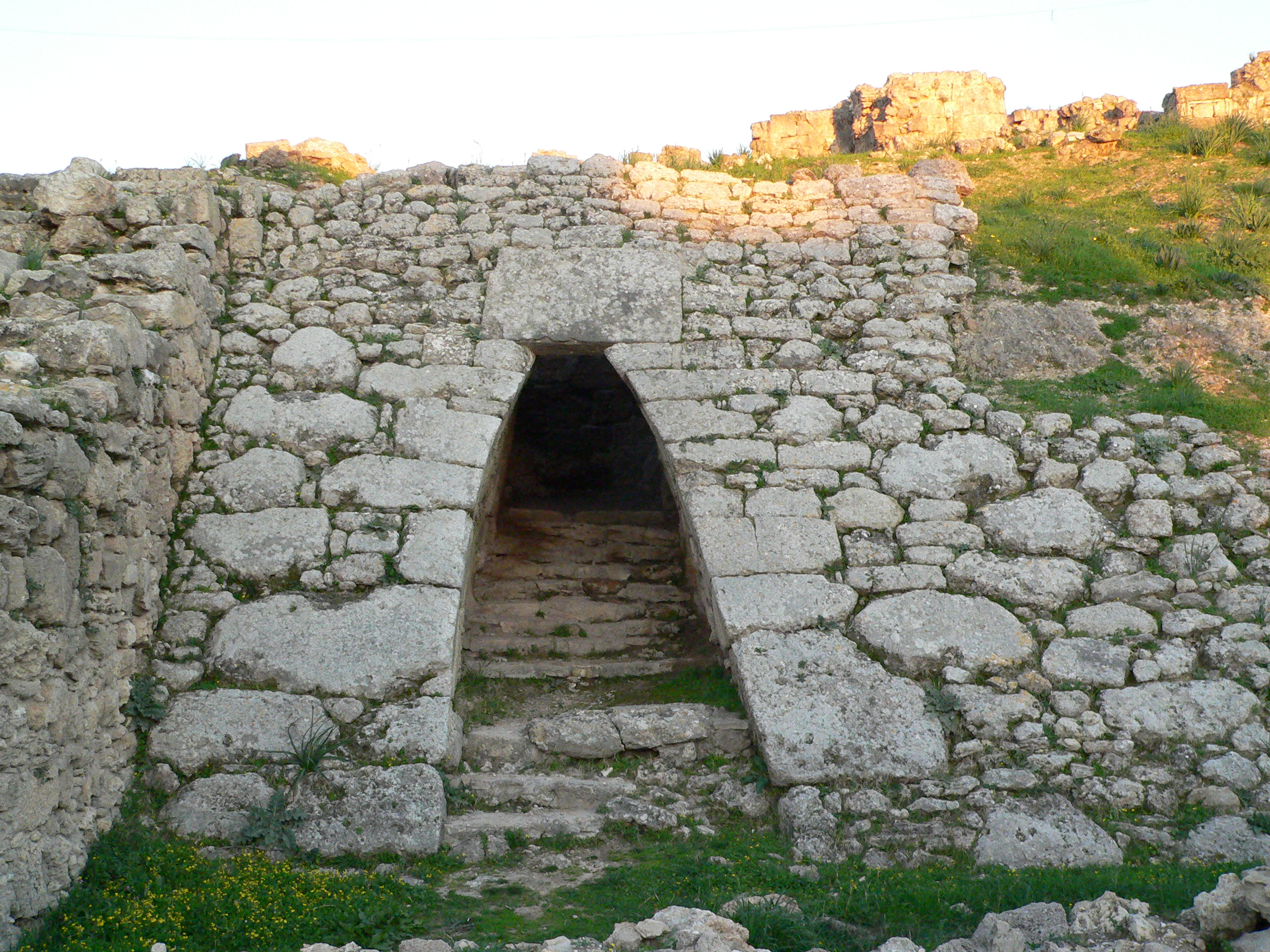
The Entrance to the royal palace at Ugarit, where the Hurrian songs were found. Photo byu Disdero.
Below runs a version of that song - along with where we began - Just Like-wise a few paragraphs back, and includes where all these Just Like songs may lead to and from - Just My Imagination.
"Just My Imagination (Running Away with Me)" is a song by American soul group The Temptations, written by Norman Whitfield and Barrett Strong. Released on the Gordy (Motown) label, and produced by Norman Whitfield, it features on the group's 1971 album, Sky's the Limit. When released as a single, "Just My Imagination" became the third Temptations song to reach number 1 on the US Billboard Hot 100.
During the late 1960s and early 1970s, producer/composer Norman Whitfield and lyricist Barrett Strong crafted a string of "psychedelic soul" tracks for the Temptations. "Just My Imagination" was the result of one of the few times that Whitfield relented and produced a ballad as a single for the group.
Norman Whitfield began the recording of "Just My Imagination" by preparing the song's instrumental track. Whitfield arranged and recorded the non-orchestral elements of the instrumental with Motown's studio band, The Funk Brothers, who for this recording included Eddie "Chank" Willis on guitar, Jack Ashford on marimba, Jack Brokensha on timpani, Andrew Smith on drums, and Bob Babbitt on bass. Jerry Long, an arranger who had previous experience with scoring films in Paris, worked on the orchestral arrangement and conducted several members of the Detroit Symphony Orchestra in performing the horns and strings for the recording. The Temptations had heard the Funk Brothers' tracks and loved them, but were "totally knocked out", according to Otis Williams, when they heard "the finished record with all the strings".
The Temptations added their vocals at Motown's Hitsville USA headquarters. While all five Temptations usually sang lead on singles during the psychedelic soul era, "Just My Imagination" is primarily a showcase for Eddie Kendricks, who sang lead on such Temptations hits as "Get Ready," "The Way You Do the Things You Do," and "You're My Everything"; in fact, this is the only Temptations hit in which Dennis Edwards did not have a lead vocal during his entire tenure with the group. The Temptations remained at Hitsville overnight recording "Just My Imagination," and while the other four members went home at six o'clock in the morning, Kendricks remained in the studio, spending several additional hours recording takes for his lead vocal.
The song was covered by the Rolling Stones on their Some Girls album and remains a much played favourite.
Hurrian Hymn 6b
by the Laurier Ancient Music Society
Text with video:
Dating to about 1400 BC, this fragmentary hymn was found inscribed on cuneiform tablets near the Amorite city of Ugarit (Modern Syria) and is the oldest piece of music to be found in the archaeological record. The lyrics are not perfectly understood, but what is known is that it is a Hymn to the goddess Nikkal. Most interpretations of the text take it to be a prayer by a barren woman to the goddess for a child.
While initially indecipherable, the melody inscribed on the tablets (in a manner similar to that of guitar tab, albeit for a lyre) has been interpreted in recent years through cultural musicology. This means that the study of the folk songs of Ugarit's modern inhabitants has yielded clues to help us reconstruct these once-lost melodies. Interpretation is still extremely controversial though.
This version is a slight variation on the interpretation done in 1998 by R.J. Dumbrill.
This video was taken at the Society's March 2014 concert.
The Jesus And Mary Chain - Just Like Honey
"Just Like Honey" is a song by the Scottish alternative rock band The Jesus and Mary Chain from their 1985 debut album Psychocandy. The track was released as the third single from the record through Blanco y Negro Records in September 1985 and was written by band members William Reid and Jim Reid.
The song appeared in several films, most notably in the closing scene of 2003's Lost In Translation, 2008's The Man Who Loved Yngve, 2014's The Curse of Styria, Netflix's series Glow Season 2 Episode 1, as well as a 2011 Volkswagen advertisement campaign. The beginning of the song uses the opening drum riff of The Ronettes' "Be My Baby".
Despite numerous claims by others as to what the meaning is in the song, the creators maintain; ''That’s just such a long time ago to remember why those lyrics came about.''
During 2015, when they were about to tour the US for a 30th anniversary of their first album, one of the Reid brothers, Jim, spoke to Rolling Stone, speaking about influences on the band when this album was made;
''The punk thing was a massive influence on the Mary Chain. After that, we got seriously into the Velvets and the Stooges. We weren’t very into what was going on in music in the Eighties. The bands that didn’t make us want to puke back then were the likes of the Birthday Party or Echo and the Bunnymen. Actually, it was the crap coming out of the radio that made us want to be in a band more than anything else...''
and
''Reverb is one of those things that, when you’re not used to making records, seems like the thing you use when you’ve not got loads of studio experience. I suppose we were into Sixties bands – like Sixties girl bands, and all that – and that’s kinda where all that came from.''
The Cure - Just Like Heaven
"Just Like Heaven" is a song by British alternative rock band the Cure. The group wrote most of the song during recording sessions in southern France in 1987. The lyrics were written by their frontman Robert Smith, who drew inspiration from a past trip to the sea shore with his future wife, Mary Poole. Smith's memories of the trip formed the basis for the song's accompanying music video. Before Smith had completed the lyrics, an instrumental version of the song was used as the theme for the French television show Les Enfants du Rock.
As Smith explained, "It meant the music would be familiar to millions of Europeans even before it was released".
Structurally, Smith found what he had written was similar to the Only Ones's 1979 hit "Another Girl, Another Planet". When he brought an instrumental demo of the song to the album recording sessions in Southern France, Cure drummer Boris Williams increased the tempo and added an opening drum fill which inspired Smith to introduce each instrument singularly and in sequence.
"Just Like Heaven" was the third single released from their 1987 album Kiss Me, Kiss Me, Kiss Me. Robert Smith said he considers "Just Like Heaven" to be one of the band's strongest works, and called it "the best pop song the Cure have ever done".
The song has been praised by critics and covered by artists such as Dinosaur Jr. and Katie Melua. Smith has said he considers "Just Like Heaven" to be one of the band's strongest songs.
The Temptations - Just My Imagination (Live)
Art Of Ageing 2020 Exhibition Coming To Warringah Library In Spring
‘I began a mechanical apprenticeship at 40 years of age at the local shire where I worked for 10 years. That’s where I learnt to weld. I started going to the back shed and building things. I entered my first sculpture in the Farm Art Show in Lockhart, 10 years ago, where I won. I pretty much entered every year since then.’
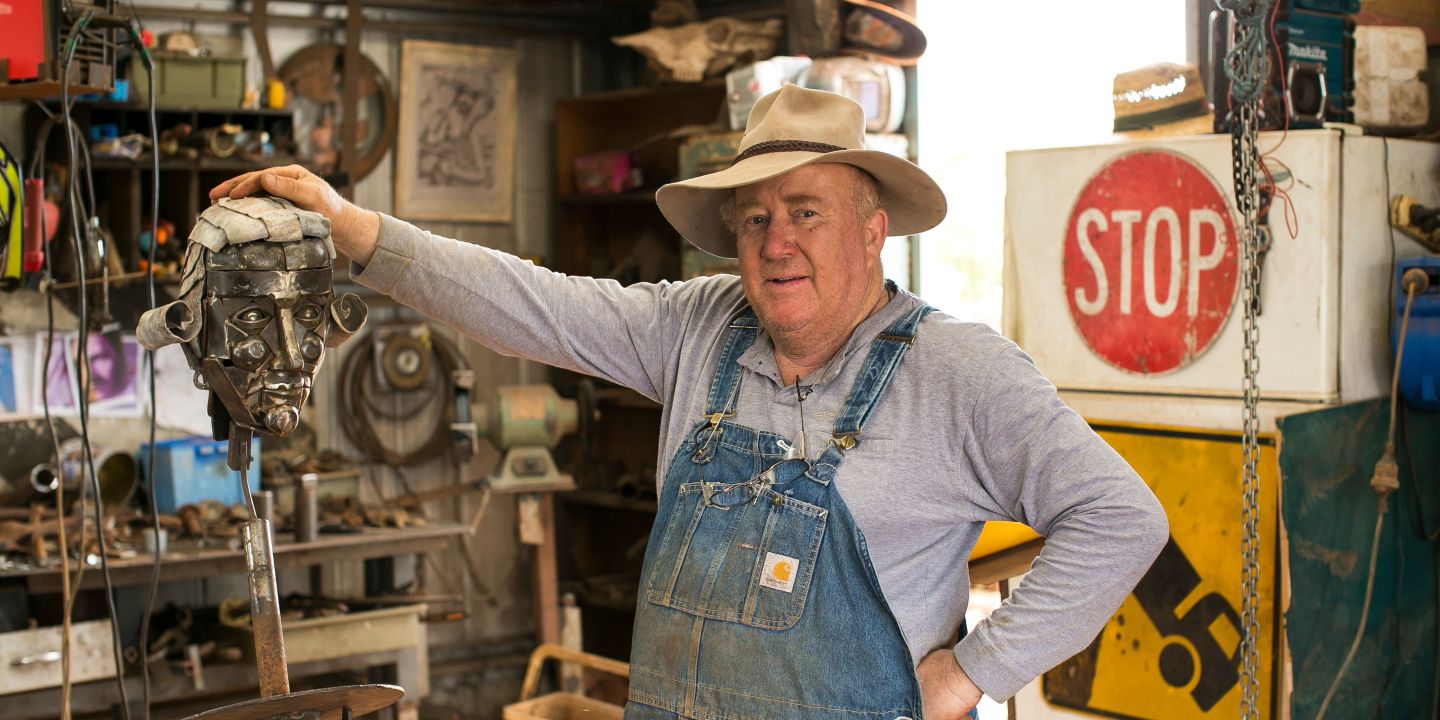
'It really sucks': how some Year 12 students in Queensland feel about 2020

With a little over three months to go, Year 12 students have their sights set on the last major hurdle that will see them complete their final year of school — exams.
What a year it has been for them. All students have experienced disruption, some for many weeks with learning at home rolled out around the nation in its various forms.
Senior induction days celebrated early this year promised a very different experience for these now young adults as their rite-of-passage year slowly changed into one of postponed and finally cancelled events.
We conducted a series of interviews at the end of the first semester with eight Year 12 students from one Queensland school, who hope to study at university. Six were female and two male.
Many students said they were anxious about how COVID-19 has affected their senior year.
One girl said she was
super overwhelmed and uncertain as to how my results will be affected […] I am nervous for the future […] to be honest I am a little bit down[…] I was extremely excited for senior year[…] there is also a lot of chaos in the world, which is pretty overwhelming.
But some were more positive. One commented on “having fantastic teachers”, while another said he was “excited to use technology more”.
Here is what else the students we spoke with had to say about their experience in 2020 and their aspirations for university in 2021.
How They Felt
As the parent of a Year 12 student, I have had the chance to sit alongside some Year 12s and witness their journey. Like many other parents and teachers, we have been privy to their disappointments and seemingly endless capacity to pivot, adapt and recalibrate — their resilience and resolve is inspiring.
Read more: 'Exhausted beyond measure': what teachers are saying about COVID-19 and the disruption to education
Because this is their year, they must make it the best it can be. But for some the resolve is wearing thin. Almost all the students in our survey expressed a sense of loss about their school year.
One girl said
we are missing out on a lot of these opportunities as well as being able to spend time with my friends at school
And another girl expressed that
it really sucks that we have already missed out on events throughout the school and we are uncertain for how long this will last.
One girl said the class of 2020 was
disadvantaged because many memories that we are meant to be making together in our senior year has been taken away from us.

This highlights the important final year of schooling as a milestone — a rite of passage.
Only one student, who was male, had a contrary view of missing out on a normal year, saying
it’s a great opportunity to relieve myself of many commitments and free up time to work on other endeavours — in other words, I feel pretty good about it.
What About University?
This year Queensland joined the rest of the country in calculating an ATAR for university entry, whereas before they used a different system.
We asked students if they had concerns about university in 2021. One girl summarised many of the responses by saying
I think everyone is a little bit worried about how we will be affected as a cohort — not just because of Covid-19 but also because we are the first year level through on the new ATAR system. That was already pretty overwhelming in terms of new assessment, new university entry calculations, etc. I think that the biggest worry/uncertainty is if universities are going to be a bit more flexible with our cohort.
Students also suggested they are looking to universities to make up some of their lost experiences. One girl said
the class of 2020 will need supportive universities with a close sense of community when we attend in 2021 to make up for some of our lost lasts.
There is a sense of shared experience, a kind of bonding these students expressed, with several comments such as we are “staying positive and looking to the future” and “we just need to look after each other”.
Perhaps endurance and resilience have become a necessary part of the DNA of the class of 2020. These are positive behaviours that will see them through their next phase of education.![]()
Donna Pendergast, Dean, School of Educational and Professional Studies, Griffith University and Sarah Prestridge, Senior Lecturer, Griffith University
This article is republished from The Conversation under a Creative Commons license. Read the original article.
Google's 'open letter' is trying to scare Australians. The company simply doesn't want to pay for news
Belinda Barnet, Swinburne University of TechnologyIf you went to use Google yesterday, you may have been met with a pop-up, warning that the tech giant’s functionality was “at risk” from new Australian government regulation.
Google Australia’s managing director, Mel Silva, wrote an open letter in response to the Australian Competition and Consumer Commission (ACCC) News Media Bargaining Code, which would require Google (and Facebook) to negotiate “fair payment” for Australian news content published on their services.
The letter, pinned to the Google homepage, claims the code would force Google “to provide you with a dramatically worse Google Search and YouTube”. The ACCC has already labelled several of the letter’s statements as “misinformation”.
It seems Google isn’t keen to set a global precedent by paying Australian news outlets for their content. Google claims the ACCC’s proposed code is disastrous, for a variety of reasons.
Its letter is part of a campaign designed to scare Australian web users. Don’t fall for it.
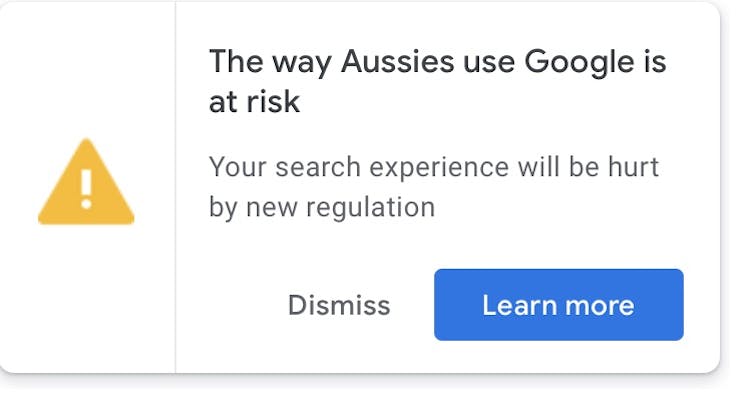
Google’s Claims Don’t Stack Up
First, Google is objecting to a specific part of the legislation designed to stop it downranking (or refusing to list) news content if Google has to pay for it.
This is precisely how Google responded when similar legislation was introduced in Spain. Google changed its search results and even shut some outlets out completely to avoid paying for news content.
The ACCC is heading that off at the pass. The legislation states if Google intends to change the search ranking of a news organisation, for example by downranking that outlet’s stories in Google’s search results, it must give the organisation 28 days’ notice of this change.
The open letter claims this is unfair and would help news outlets “artificially inflate their ranking over everyone else”.
When asked how this was this case, a Google spokesperson told The Conversation the code would require the company to “give all news media businesses advance notice of algorithm changes and explain how they can minimise the effects”.
They said this provision would “seriously damage” Google’s products and user experience and impact its ability to provide users the most relevant results.
However, this claim doesn’t bear logical scrutiny. Notifying a news company of its impending downranking would not give it an unfair advantage, as no other types of content providers would be targeted for demotion anyway.
It would simply warn the outlet if Google was about to drop them down in search results, or boot them off altogether. The 28 days’ notice requirement is an insurance policy in case Google retaliates by deciding to simply downrank media outlets demanding payment for content. That’s why Google hates it.
It’s tempting to conclude that Google is simply trying to gaslight its users by sowing doubt about the wisdom of the new regulations – because it doesn’t want to pay.
Actively Misleading Users
Google’s open letter went on to claim Australians might experience data privacy violations if it’s forced to hand advertising data over to “big news businesses”.
Setting aside for a minute the fact that Google is trying to play the “little guy” here, which is laughable, let’s first look at why this is also a falsehood.
The proposed code states Google would have to share data collected about users’ engagement with news content with news media outlets. For example, this would include details about the specific articles a user has clicked on from that outlet, or how long they were reading it for.
Read more: The ACCC is suing Google for misleading millions. But calling it out is easier than fixing it
This is exactly the kind of data media outlets (including The Conversation) already collect from readers on their own platforms. Yet Google’s letter claims “there’s no way of knowing if any data handed over would be protected, or how it might be used by news media businesses”.
This is pretty rich coming from one of the world’s most data hungry companies, and one of its most prolific privacy violators.
In a further statement to The Conversation, Google’s spokesperson added:
The code requires Google to tell news media businesses what user data we collect, what data we supply to them and ‘how the registered news business corporation can gain access to’ that data which we don’t supply to them … This goes beyond the current level of data sharing between Google and news publishers.
But Google itself has oceans of information about its users’ searches, habits and preferences. In fact, the ACCC is currently pursuing Google over alleged privacy violations in a separate lawsuit.
Google Is Not The Underdog Here
Finally, Google’s open letter ends with the veiled threat its free services may be “at risk” if the proposed ACCC code becomes law.
Google’s spokesperson told The Conversation that Google “did not intend to charge users for [its] free services”.
“What we did say is that Search and YouTube, both of which are free services, are at risk in Australia,” they said.
Google is now a trillion-dollar company. Its parent company Alphabet earned US$46 billion in worldwide advertising revenue in 2019’s last quarter alone.
Google claiming its free services for Australians are “at risk” if it has to return a tiny fraction to the companies that actually provide news content – well, I’m sceptical of all the claims in the letter, but this one takes the cake.![]()
Belinda Barnet, Senior Lecturer in Media and Communications, Swinburne University of Technology
This article is republished from The Conversation under a Creative Commons license. Read the original article.
Instagram is the home of pretty pictures. Why are people flocking to it for news?

We know Instagram is the most influential app when it comes to lifestyle and beauty trends.
But recent research shows increasing numbers of people are also going to Instagram for their news. A report by the Reuters Institute found the use of Instagram for news has doubled across all age groups since 2018.
It is now set to overtake Twitter as a news source in the coming year, with younger people in particular embracing Instagram for their news.
What Is ‘Insta’?
Instagram is a social media platform where users post photos with captions, with an estimated one billion active users around the world.
The Reuters report found Instagram reaches 11% of people of all ages for news, based on survey results for 12 countries, including Australia.
But the embrace of the platform for news is particularly pronounced for young people. For example, in April, 24% of 18-24 year olds in the United Kingdom used Instagram to find out about COVID-19. This compares with 26% in the United States.
Australians were not polled for this particular question, but a 2020 Australian study of school students found 49% of teenagers surveyed got their news from Instagram.
Instagram is certainly viewed as a younger person’s platform, as opposed to Facebook, which is seen to be for older people. Those between 18 and 34 make up about 63 per cent of Instagram users worldwide.
Instagram users can receive news stories and updates by following another user and then seeing what they post by scrolling through their feed. Alternatively, users can search via a hashtag.
Why Are Young People Choosing Instagram For News?
Those under about 35 have grown up with mobile and social media as the norm. So it follows they interact with news and current events in a radically different way from previous generations, or even news consumers a decade ago.
Recent research suggests young people think that rather than going to dedicated sources for their news - like a newspaper or TV bulletin - the news will come to them. So, important information “finds them” anyway, through their general media use, peers and social connections.
Another key difference with older news consumers is that younger people are “prosumers”. Not only do they read the news, they can actually produce it and join in what’s trending. Sometimes, this may be by simply sharing a post with extra commentary and opinion. At other times, users might take an image or video and edit it in order to make and share a meme that relates to the content.
Order In A Chaotic World
Amid global chaos and uncertainty, Instagram offers up the world as a stable, structured, and highly stylised.
Instagram is less chaotic than other social media platforms because of the actual interface design. That is, the focus is almost purely on aesthetics - on the beauty and impact of the image using filters and tools. This type of media consumption soothes instead of provoking anxiety. In some senses, it simplifies and streamlines the chaos of the world.

Instagram’s ability to simplify and “organise” the world resonates with another finding of the Reuters report - Instagram has become even more important with younger groups for accessing news about COVID-19.
The Power Of Influencers
Instagram is home to “influencers” - high-profile users who are considered to be style and opinion leaders. While they can influence the products we buy, or the places we travel to, they can also influence the information we consume.
This becomes even more important in times of crisis. It is comforting to seek out narratives or perspectives from people we know and trust.
In the case of news media, Instagram gives young people what feels like a direct and personal line to their role models. In this respect, so does Twitter, but again, the interface of Instagram is simpler. On Instagram, what might be complex and confusing issues are condensed down to images.
Recent research also suggests Instagram users prefer “lighter” and “less-demanding” types of interaction with online news.
What Does This Mean For News Consumption?
The implications of the move towards “Insta-news” are complex. One concern is the way people can curate their own reality, because they can shape their feed so they only see what they want. They can unfollow or block what they do not like.
Read more: Pivot to coronavirus: how meme factories are crafting public health messaging
In some senses, this can sense of control is positive. However, this also means people are essentially constructing what they want the world to look like. This leads to “filter bubbles”, where people become “cut off” from other, perhaps more challenging, ideas.
Western culture is essentially “ocularcentric”. In other words, we are obsessed with images. And we are more likely to believe things we can see. As a result, news consumers may be less inclined to challenge or critique what they see on Instagram. Even though they need to be doing this online more than ever.
The dangers of fake followers, fake accounts and fake news are already well-known on social media. Last year, Institut Polytechnique de Paris researchers found 4,000 fake accounts in a targeted sample on Instagram.
Good-Looking News In A Hostile World
For young people seeking solace from the hostility and pressure of news events, Instagram provides a space filled with good-looking visual stimulation, often from people they like and trust.
And as the Reuters report noted - Instagram may not be everything. Social media are generally used “in combination” with other types of news information.
But as increasing numbers of people turn to Instagram for their news, the question remains: is this the news they need, or simply the news they want to see?
Read more: Pastel colours and serif fonts: is Annastacia Palaszczuk trying to be an Instagram influencer? ![]()
Dr Laura Glitsos, Lecturer in Arts and Humanities, Edith Cowan University
This article is republished from The Conversation under a Creative Commons license. Read the original article.
10 years on, Inception remains Christopher Nolan's most complex and intellectual film

Ten years on from its release, and hitting cinemas again, Christopher Nolan’s Inception still puzzles and intrigues.
It is one of those films in which you discover something new each time you watch it. Or, more likely, it makes you reinterpret what you thought you already knew.
Nolan’s oeuvre builds complex paradoxes of time, space and dimension. Memento (2000) and Insomnia (2002) deal with the order of time; The Prestige (2006) deals with the illusion of space; Interstellar (2014) moves through multi-dimensions.
Inception goes one step further, exploring the manipulation and distortion of all three states. It is a narrative set in the subconscious.
Nolan’s other films are set within a real world framework. It is uniquely Inception that moves into the unreal dream dimension. As in Stanley Kubrick’s 2001: A Space Odyssey (1968) and David Lynch’s Eraserhead (1977) and Mulholland Drive (2001), Nolan explores not a singular subconscious world but billions of worlds interconnected.
Read more: The Matrix 20 years on: how a sci-fi film tackled big philosophical questions
It takes an astute viewer to realise what world you are in (are you in the real or unreal, are you in the mind of this character or that one?) throughout the film.
The Complex Subconscious
Cobb (Leonardo DiCaprio) is a professional thief, stealing information directly from his targets’ subconscious minds. As a payment for implanting ideas into someone else’s subconscious, he can have his own criminal history erased.
At the beginning of the film, Cobb says:
I know how to search your mind and find your secrets. I know the tricks, and I can teach them to your subconscious so that even when you’re asleep, your guard is never down.
This could well be Nolan’s secret to the film.
Everything you see is a trick. Inception plays constantly with reality and the dream state. Nolan drops visual clues throughout the film, forcing the viewer to become a cinematic investigator to unravel his message.
It seems even Nolan realises how difficult it is to understand the film’s universe and narrative. He constantly resorts to large blocks of exposition to explain what we have seen, or what is happening – or going to happen.
Read more: How do you know you're not living in a computer simulation?
With any other film you’d think this was a big mistake, but in Inception this exposition is a necessary road map to deciphering the mysteries of its increasingly complicated subconscious world.
Even Nolan himself can lose track on this road map, as he told Wired:
One of the things you do as a writer and as a filmmaker is grasp for resonant symbols and imagery without necessarily fully understanding it yourself.

(Un)Realities
Perhaps the greatest trick of all in this film is that by its end you question if you have even been in any true reality (at least in terms of the cinematic world it depicts) – or did we just leap from one subconscious mind to the other?
It’s still a point of discussion among fans. The Inception subreddit gets daily questions about how to unpack the film. New theories about the different realities are constantly being put forward.
But don’t let Nolan’s complex storytelling or technical wizardry blind you. In all of his films, family is the main motivator for each of the central characters. Family drives the story forward.
Read more: On Interstellar and 'real physics'
Both Memento and The Prestige have obsessive compulsive main characters who are driven to avenge their dead wives. In Interstellar, Cooper (Matthew McConaughey) is brought back from the brink by his daughter. In Inception, Cobb becomes separated from his children because of his criminality and it is his love for them that motivates the entire story.
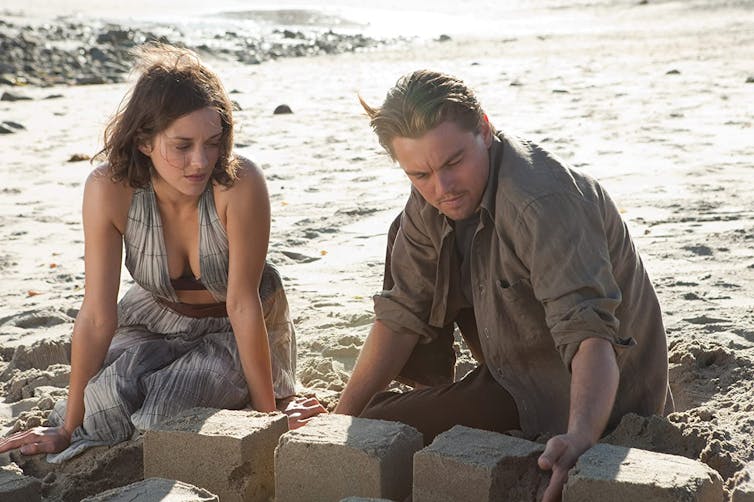
Without these familial foundations, Nolan’s films would be smart but they would have no soul. Each of the main protagonists is well aware of what is motivating their redemptive actions. The ends justify the means – murder, mayhem, misery - as long as the end is love.
Playing With Paradoxes
Inception is by far Nolan’s most complex film and arguably his most intellectual, with its questions of where does the real world end and the subconscious begin?
It is also visually stunning, with a whole street exploding or a hallway spinning 360 degrees, making the characters appear to defy gravity. These are not computer graphics, but effects created live on set.
While all of Nolan’s films end very neatly and satisfactorily, Inception’s is highly ambiguous. The spinning top at the beginning of the film, which represents the dream world, still spins at the end. Does that mean the whole film has taken place in the subconscious and nothing we have seen is real?
Inception’s re-release comes just two weeks before Nolan’s new film, Tenet, hits cinemas after delays due to COVID-19. Tenet appears to be another mind trip where time, space and dimensional paradoxes are a large part of the narrative.
Watching Inception will attune your skills of observation and interpretation and prepare you for Tenet. But, as with any Nolan film, don’t take anything at face value.
As Cobb would say: Nolan knows the tricks.
Inception is in select cinemas from today![]()
Daryl Sparkes, Senior Lecturer (Media Studies and Production), University of Southern Queensland
This article is republished from The Conversation under a Creative Commons license. Read the original article.
Book Of The Month August 2020: Life Of Charles Dickens
by Mackenzie, R. Shelton (Robert Shelton), 1809-1880; Dickens, Charles, 1812-1870
Publication date 1870
Stay Healthy During The HSC
In any ‘normal’ year the HSC requires dedication and focus as well as the support of friends and family.
This year hasn’t exactly panned out to be a ‘normal’ year, with announcements about changes to the HSC due to COVID-19.
Despite all the goings-on, students across NSW are continuing to study for their HSC with focus and determination, and we at NESA are here to help.
This year we are partnering with mental health organisation ReachOut to deliver news, information, guidance and advice to support all HSC students.
You’ll hear from experts, teachers, parents and other students as well as some inspiring spokespeople. This year we are planning to lighten your mental load with practical tips and tricks for staying active, connected and in charge of your wellbeing.
ReachOut’s Study Hub has heaps of info about taking a proactive approach to your mental health or where to go if you need more support. ReachOut’s Forums are great for sharing what’s going on for you and get ideas about the best ways to feel happy and well.
So follow and use #StayHealthyHSC for regular health and wellbeing updates and information.
View our range of social media images, posters and flyer to help you get involved and share the Stay Healthy HSC message with your community.

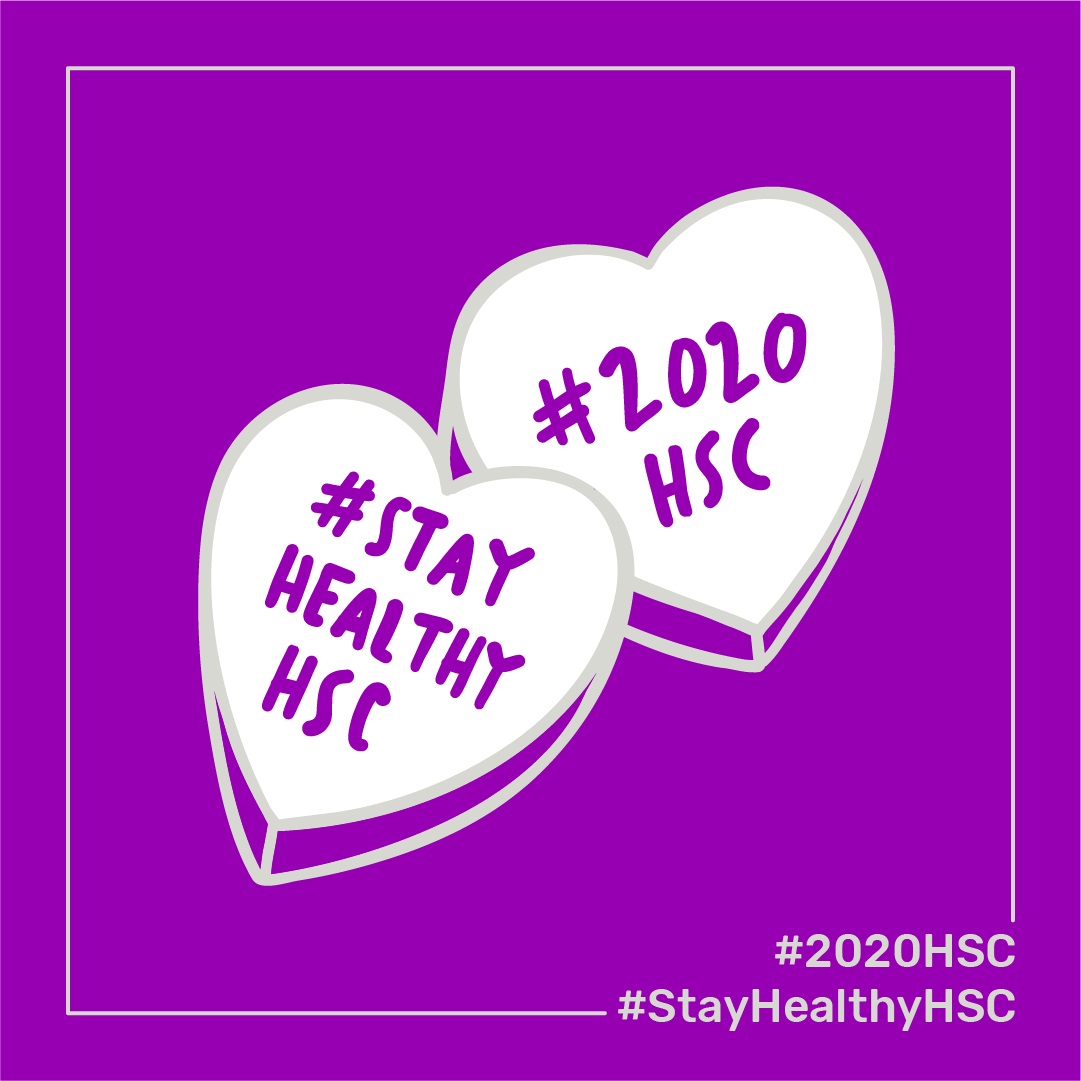
Low Humidity Increases COVID-19 Risk: Another Reason To Wear A Mask
- Additional evidence from the Sydney COVID-19 epidemic has confirmed cases to be associated with humidity
- Reduced humidity was found in several different regions of Sydney to be consistently linked to increased cases
- The same link was not found for other weather factors -- rainfall, temperature or wind
- Climatic conditions conducive to the spread of COVID-19 present a challenge to public health.
- Michael P. Ward, Shuang Xiao, Zhijie Zhang. Humidity is a consistent climatic factor contributing to SARS‐CoV‐2 transmission. Transboundary and Emerging Diseases, 2020; DOI: 10.1111/tbed.13766
- Michael P. Ward, Shuang Xiao, Zhijie Zhang. The role of climate during the COVID‐19 epidemic in New South Wales, Australia. Transboundary and Emerging Diseases, 2020; DOI: 10.1111/tbed.13631
How To Reduce Offshore Supply Chain Risks And Create Onshore Manufacturing Opportunities
Ruby Princess Special Commission Of Inquiry
Naming Sydney's Third City
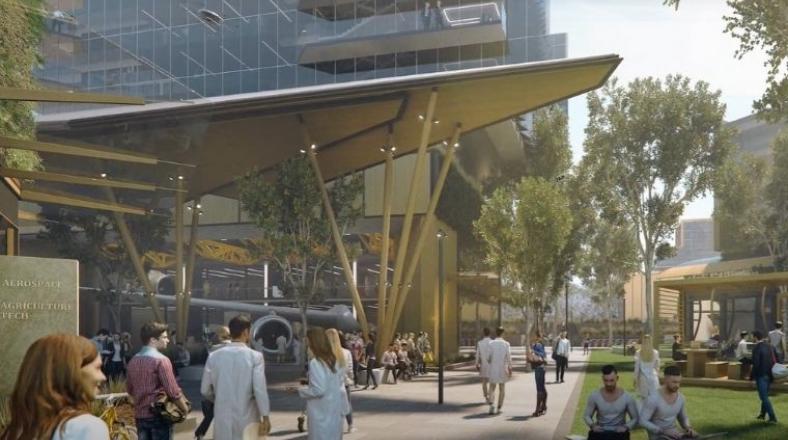
NSW Government Backs Exporters To Go Global
- a $1.8 million Going Global program which will provide export coaching, networking and in-market assistance for export-ready firms. The initiative includes 15 tailored programs covering nine markets and ten sectors.
- a $10 million Export Assistance Grant scheme reimbursing 50 per cent of eligible expenses up to a maximum of $10,000 per eligible business
- connections to international consumers via the Buy Regional Goes Global initiative
- online webinars to help businesses upskill
- ongoing support through the NSW Government’s network of trade advisors in regional locations and Sydney, and its international trade and investment offices around the world
- access to information on the Global NSW website
- other support, tools and resources available online.
Disclaimer: These articles are not intended to provide medical advice, diagnosis or treatment. Views expressed here do not necessarily reflect those of Pittwater Online News or its staff.